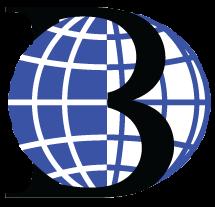IN FOCUS FUTURE PIPELINE










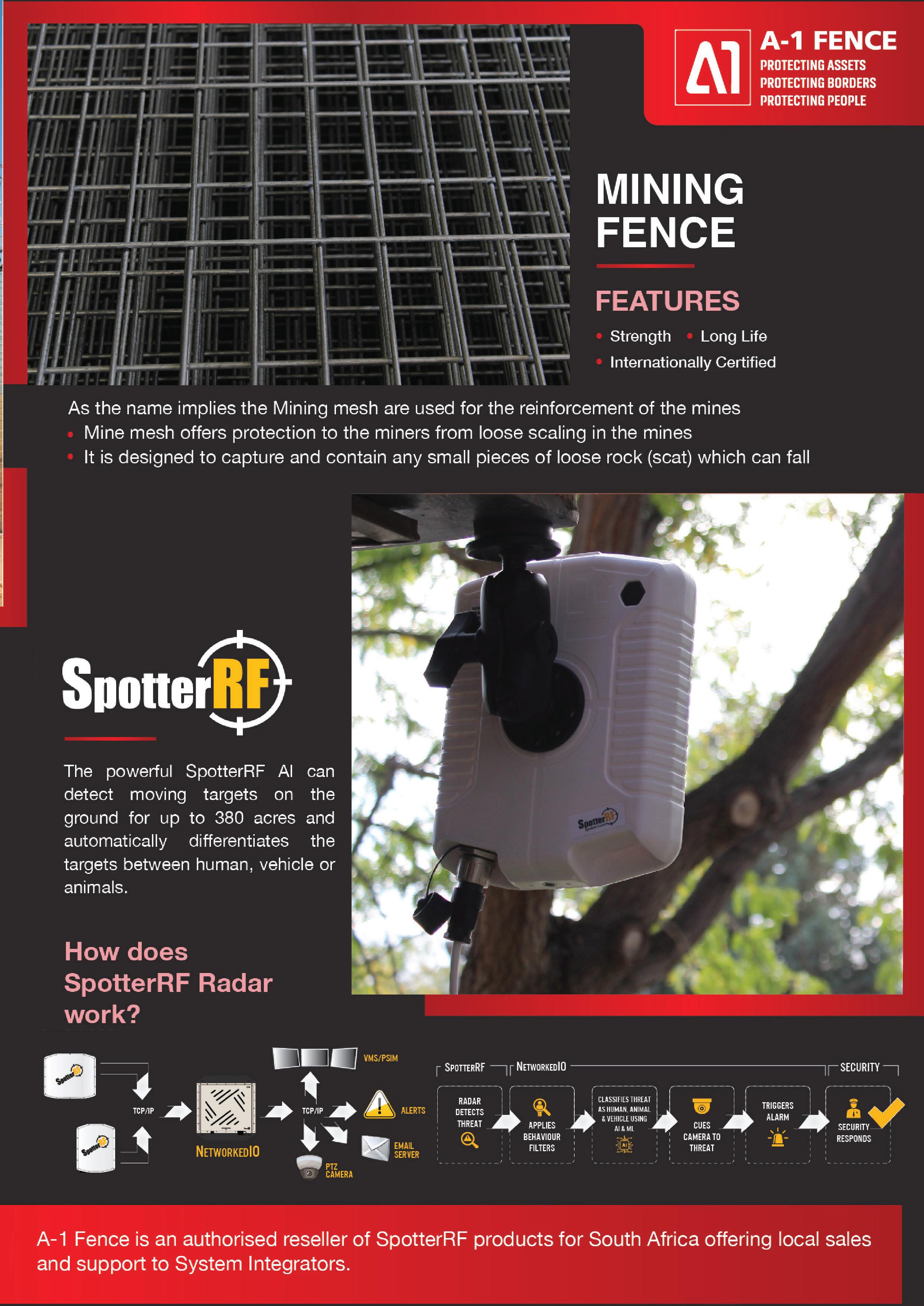
De Beers Group reports on progress toward achieving 2030 sustainability goals




Artisanal gold mining in South Africa is out of control —mistakes that got it here







Powerful X-rays reveal the birth of giant rare earth element deposits—and may give clues for sustainable mining




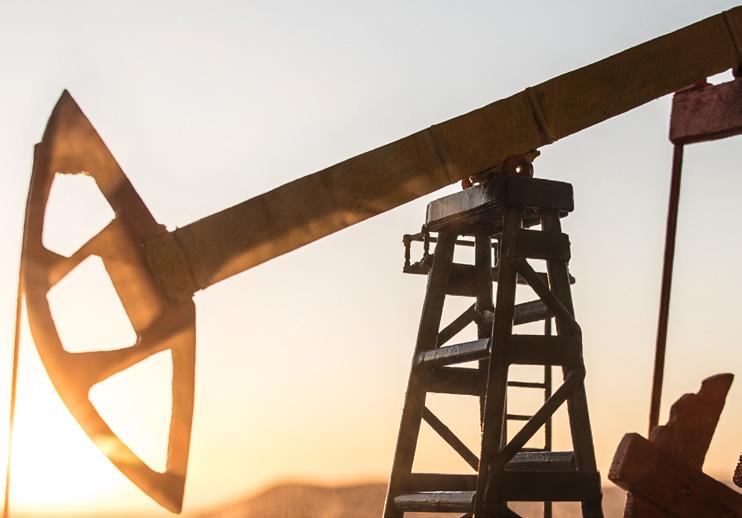





> Partnering with the North West Department of Education on a 50/50 basis we have constructed and opened within our Waterkloof Hills Estate:

• a Primary school that can accommodate 1 280 learners starting at Grade R and
• a Secondary school that can accommodate 875 learners starting at Grade 8 at a cost of R140 million.

The school facilities, which are wheel-chair friendly, include a school hall, interactive boards with projectors in the classrooms, laptops for all educators, soccer fields, multipurpose courts, multi-function rooms, science laboratories, eating halls, libraries, computer rooms, sickrooms and 256 parking bays, amongst others.
Learners from both our estate and the neighbouring suburbs may enrol in the schools.


> Celebrating our contribution to the achievement of SDG 11 by providing our permanent employees with the opportunity to own their own homes in a safe and sustainable urban housing estate (Waterkloof Hills Estate)
> Delivering on our mission: to leave a lasting legacy of sustainable benefits for our stakeholders by delivering More than mining


> Meeting our Mining Charter and Wage Agreement commitments
BY JUNE 2022:




• 1 575 of our employees have bought homes in the estate, where over 5 000 people are living
• a secure perimeter wall with 24-hour access control keeps our employees’ families safe in the well-manicured estate, which offers a number of communal parks with braai areas and playground equipment for children
safe, resilient and sustainable
s the year winds down, I’d like to welcome you to African Mining News 8, our final edition of 2022. That being said, the work doesn’t stop, as we’re already hard at work on edition 9 slated for the end of January 2023.

It’s been a tough year, with many industries still striving to overcome the ravages of the COVID-19 pandemic. We’ve been there, too. It’s with this in mind that I’d like to thank all our advertisers for their support throughout the year. It hasn’t been easy for anyone financially, so we appreciate that you would trust us with your ad spend.
What the new year holds we can only speculate, but I think we can safely say it’s going to be a long road filled with potholes, and bumps and bruises.
However, what fills me with confidence that we’ll come out the other side is the interviews with businesspeople I’ve done this year. Sitting face to face or via virtual platform with numerous CEOs and MDs, listening to them speak with such passion and conviction about their future projects, gives me hope.



It’s easy to become despondent when you’re constantly being pummelled by body blows. I suppose Sylvester Stallone said it best in Rocky Balboa when he told his son: “It ain’t about how hard you hit, it’s about how hard you can get hit—and keep moving forward.”
Enjoy the read, stay safe, and may you have a blessed festive season with your family and friends.
ashley@avengmedia.co.za





Participants in the mining industry face many complex challenges and the legal landscape is intricate and evolving. Our mining team understands the market and has a wealth of industry experience in all facets of this specialist sector, built over many years of in-depth involvement.
Our team is multi-disciplinary and includes a number of leading legal experts across a broad range of areas of speciality in south and eastern Africa. Our immersive and longstanding association with the resources sector means we have sound, practical knowledge and can offer a full range of services in a comprehensive and commercial way. Our lawyers are highly skilled and have extensive experience. We are a solution driven and dynamic team and are well placed to offer relevant advice at a strategic level as well as on dayto-day legal issues.
We have long-standing relationships with a large number of key players in the South African and Kenyan industry and also act for many mid-tier and junior miners. We have been engaged by a number of foreign companies seeking to invest across Africa’s mining industry, including
clients from Europe, North America, India, Russia and China. Our team has been involved in many of the largest and most prominent and complex resource industry transactions and matters in South, East, and sub-Saharan Africa, including recent headline landmark black economic empowerment (BEE) transactions. Whatever your needs in the sector, we have the technical expertise and provide a cohesive and integrated service based on excellence.
Mining is a global business. Commercial and financing transactions and disputes increasingly have an international dimension. As well as providing local and national support, we can support your business needs wherever in the world you do business.
Labour disputes, regulatory uncertainty, changing policies and laws, and stringent environmental regulation all add up to one truth – you need the right legal team working with you. A team with experience and insight not only in all aspects of law, but in the mining industry as a whole. A team like CDH. We have been key to some of the largest, most prominent resource industry matters and transactions in South, East, and Sub-Saharan Africa including BEE deals, regulatory issues, mining M&A, mining sector restructurings and funding transactions. And we can help you too. Contact our award-winning team :
ALLAN REID
Joint Sector Head: Mining & Minerals
Director: Corporate & Commercial T +27 (0)11 562 1222
E allan.reid@cdhlegal.com
FIONA LEPPAN

Joint Sector Head: Mining & Minerals
Director: Employment Law T +27 (0)11 562 1152
E fiona.leppan@cdhlegal.com
CDH has a multi-faceted legal team that successfully guides mining businesses through a constantly evolving legislative framework. Partner with us for expert, practical advice.
From vision to fruition.
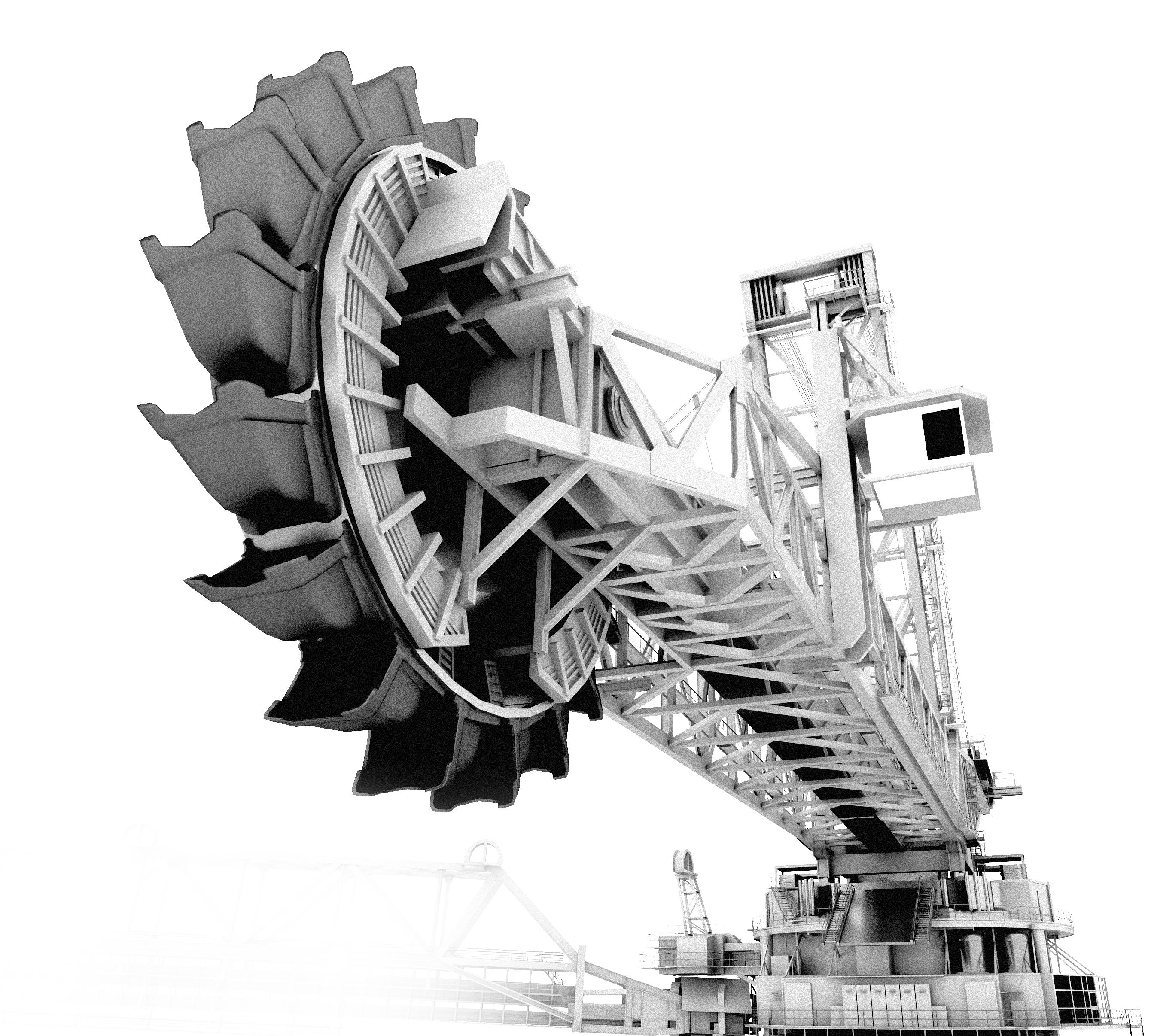

Cape
This event will connect the world with the African energy industry. The platform of choice for investors, IPPs, utilities and government leaders, the 2022 event will provide the deal platform and engine room for growth across Africa’s renewable and low-carbon sector. If your company is involved in Africa’s energy transition, this is the place to be.
Mintek, Randburg, South Africa and online www.saimm.co.za
This is a hybrid conference on mine-impacted water, including acid mine drainage—with the theme of “Impacting the circular economy, closing the water loop”. It will provide an excellent opportunity for industry, researchers and other global stakeholders to share their knowledge, new processes and technologies that can be used to advance the implementation of sustainable solutions to the challenges associated with mine-impacted water.
V&A Waterfront, Cape Town, South Africa aecweek.com
African Energy Week is the African Energy Chamber’s annual event, uniting African energy leaders, global investors and executives from across the public and private sector for four days of intense dialogue on the future of the African energy industry. An interactive conference, exhibition and networking event, AEW was established in 2021 under the premise to make energy poverty history by 2030—hosting panel discussions, investor forums, industry summits and one-on-one meeting opportunities, and driving the discussions that will reshape the trajectory of the continent’s energy development.
International PGM Conference Sun City, Rustenburg, South Africa www.saimm.co.za
This conference series has covered a range of themes since its inception in 2004, and traditionally addresses the opportunities and challenges facing the platinum industry. The 8th International PGM Conference will, under the guidance of the organising committee, structure a programme that covers critical aspects of this continually evolving and exciting industry. Topics to look forward to include: fuel cells; solar power and renewable energy; mine planning and design; ESG issues; and the 4th Industrial Revolution, among others.
Wallenberg Conference Centre, Stellenbosch, South Africa www.saimm.co.za
The fast, efficient and safe abstraction of raw mineral reserves is of strategic importance for leading mining companies. The South African mining sector needs to mechanise at a faster pace in order to remain globally competitive. This conference—titled “Tunnel boring in civil engineering and mining”—is in response to the civil and mining industry being under immense pressure to deliver projects fast, efficiently and as safely as possible. Tunnel boring and mechanised underground excavation and support installation is proving to be an invaluable and cost-effective tool in the execution of a project.
Rub shoulders and conduct business with the high-flyers in the African mining industryTown International Convention Centre, South Africa greenenergyafricasummit.com
Light on emissions. Light on the environment. Fuelled by the lightest element on earth – hydrogen gas.
Our nuGen™ Zero Emission Haulage Solution (ZEHS) represents the future of mining. It’s an end-to-end integrated green hydrogen production, fuelling, and haulage system, featuring the world’s ‘lightest’ 510-tonne truck.
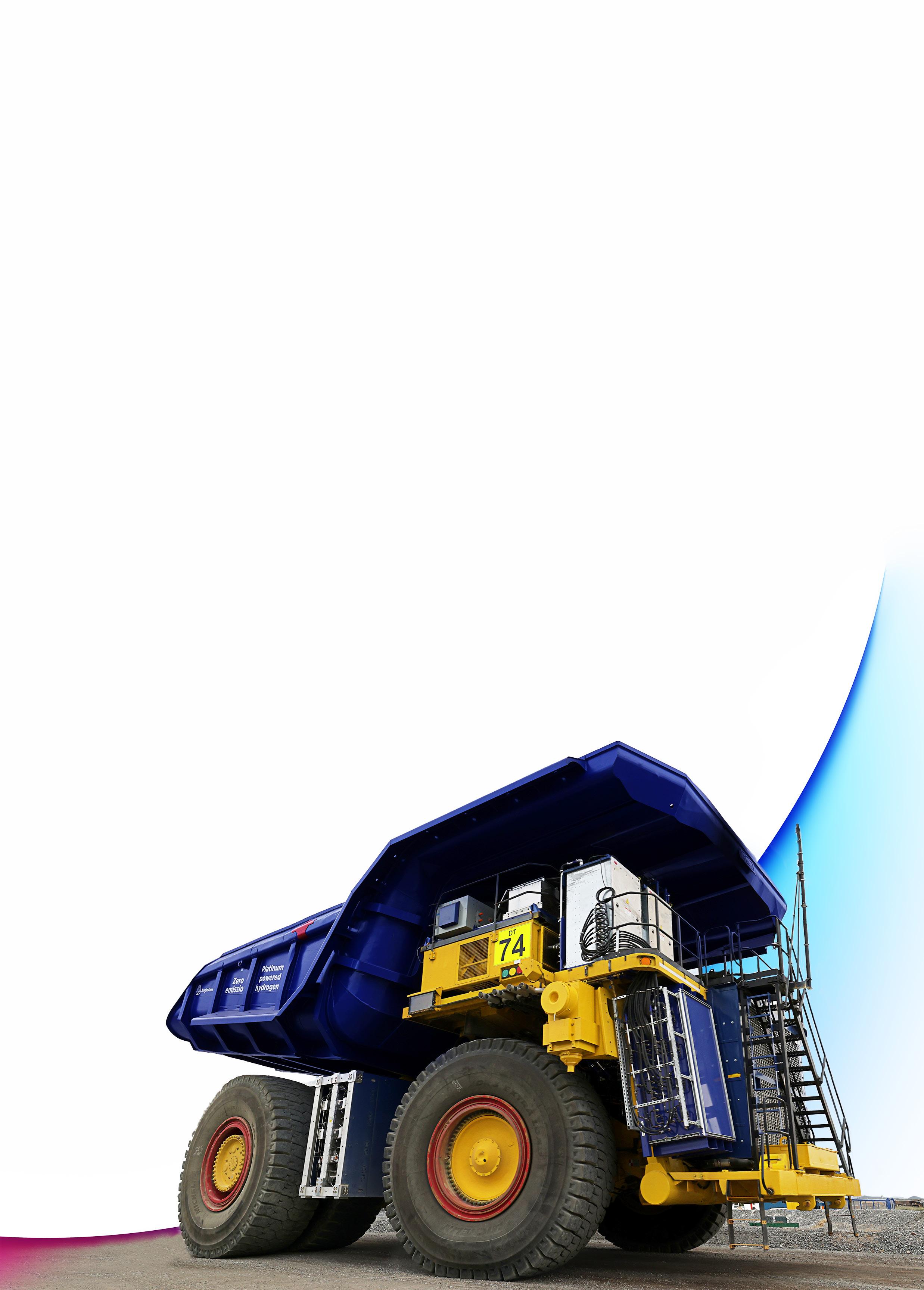
nuGen™ is one of the initiatives in our FutureSmart Mining™ programme that is making mining more digitised, integrated, and safer; supporting the environment, creating jobs, and helping us build a better future.
Scan the QR code to find out how our business is working towards a shared, sustainable future for all.
Together, we are shaping a better future.

South Africa is one of Africa’s leading industrialised economies, endowed with enormous

natural resources potential that is critical to enabling life as we know it and helping to decarbonise the world’s energy and transport systems.
In South Africa, Anglo American is actively helping realise this natural potential by sustainably producing many of the metals and minerals essential to realising the globe’s low-carbon future and developing a 3-5GW regional renewable energy ecosystem – in partnership with a global energy partner, EDF Renewables. This system has the potential to draw on the country’s abundant renewable resource potential and result in the construction of a network of on-site and off-site solar and wind farms. Each of Anglo American’s operations lies within a unique wind, solar, and topographic resource area.
One site may be suitable for solar power, and another is better suited for wind power generation. While each mine operation has different energy consumption patterns, when connected into a singular system, and as each site’s renewables become optimal, they are poised to deliver around-the-clock energy to all the company’s operations.


The goal behind the ecosystem is not only to provide for Anglo American’s energy demands but also to supply surplus energy into the grid while opening the door to developing an entirely new renewable energy generation industry and all the services that will support it.

Leveraging its FutureSmart Mining™ programme – bringing technology, digitalisation and sustainability together to make mining more integrated, automated, and carbon-neutral whilst using far less water – Anglo American has already secured 100% renewable electricity supply for all its operations in South America. It is expected that by next year, 56% of Anglo American’s global grid supply will come from renewables.
As the global mining company progresses towards its 2040 target of neutral carbon operations, its partnership with EDF Renewables is designed to abate the largest single source of its Scope 2 emissions, its current grid energy usage in South Africa.
The transition to a low-carbon future is not without challenges for a country like South Africa. These challenges cannot be addressed by any single entity, private or public. That is why transitioning to a lowcarbon future requires collaboration across institutional lines, joining civil society, communities, private sector, and government in a joint bid to ensure that the move to a low-carbon economy is just and seen to be so by all.
Anglo American supports South Africa’s just energy transition by placing people at the heart of its initiative. Already, over R5 billion in investment has been made in scalable, long-term economic development, education, and

health interventions to help improve the lives of its employees and help build thriving host mining communities.
Through the development and construction of the regional renewable energy ecosystem, Anglo American seeks to generate up to 40 000 new jobs by the end of the project.
The build-out of renewable energy across South Africa will also provide the foundation for developing a hydrogen economy through the production of green hydrogen. Earlier this year, in a world first, the company launched a pilot of an end-toend integrated green hydrogen production, fueling and haulage system for its mine sites – the nuGen™ Zero Emission Haulage Solution (ZEHS). This world-first and ambitious pilot project marks the first time a 220-tonne truck with a 290-tonne payload was converted to run on hydrogen. The truck is a 2MW fuel cell battery hybrid - the best available technology combination for this specific use case - with a hydrogen fuel cell providing roughly half of the power required and a battery pack the other half, allowing us to recover energy while braking.

Specifically, Anglo American expect hydrogen and electricity from renewable energy sources to progressively displace diesel and petrol for vehicles and other machinery. The economic development associated with these changes could also provide the backbone for creating a hydrogen economy in the region – thus helping to drive South Africa’s just energy transition farther through employment and economic activity in this supply chain and the construction and services sectors.
In this way, the pathway to Anglo American’s carbon neutrality offers a case for continued investment in South African mining, the catalyst for new economic activity around renewable energy within the region and supports a nation’s journey toward a just energy transition into the low-carbon economy of the future.
THE ECOSYSTEM’S GOAL IS NOT ONLY TO PROVIDE FOR ANGLO AMERICAN’S ENERGY DEMANDS, BUT ALSO TO SUPPLY SURPLUS ENERGY INTO THE GRID.

For almost 130 years, Rand Mutual Assurance (RMA) has been compensating injured miners and ensuring beneficiaries and their families receive the care to which they are entitled, following a workrelated injury or occupational disease. It is a well-established social assurer that is compassionate and caring, delivering beyond compensation of injuries and diseases.
The South African Constitution promotes equity for all people in the country, and this includes injured or disabled workers. The impending Compensation for Occupational Injuries and Diseases (COID) Amendment Bill is intending
to extend further duties to both employers and compensation funds, such as RMA, to participate in and fund workplace rehabilitation.
RMA is already committed to rolling out workplace rehabilitation ahead of the promulgation of this Amendment Bill. We spoke to Dr Miranda Moloto, head of the newly established rehabilitation division at RMA, to find out more about this worthy service.
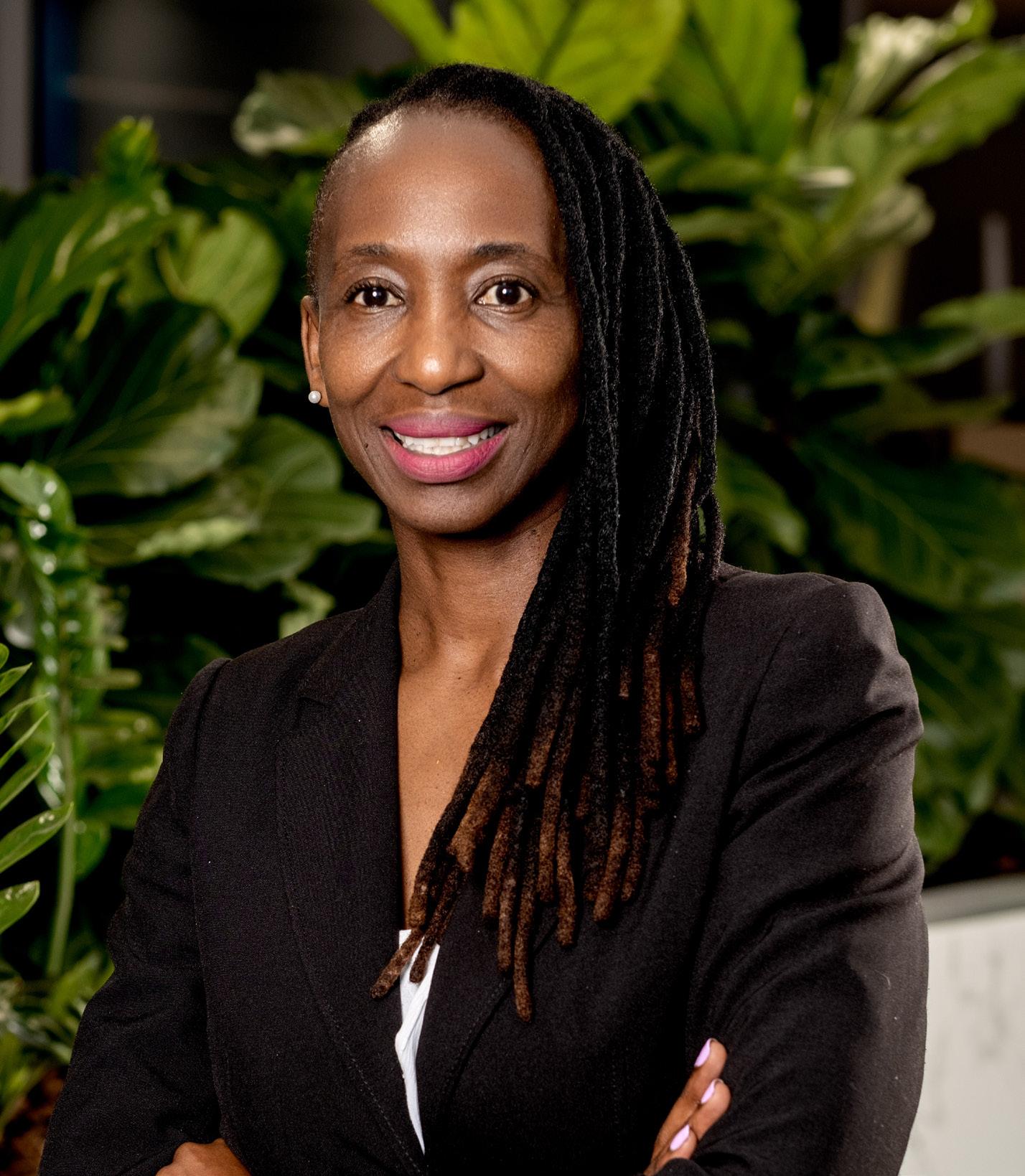
Dr Moloto graduated from Sefako-Makgato Medical University and pursued a career in occupational and public health, following a short stint as a family practitioner. She studied health management systems after discovering that her passion lies in the betterment
of the broader population as opposed to impacting one patient at a time. She has worked in, among other areas, digital health and telemedicine (application of medicine and ICT) to deliver quality, efficient and accessible healthcare to underserved communities.
Having worked at RMA for almost a year—with the latter three months in the rehabilitation division—Dr Moloto feels she has come full circle in her career in occupational and public health, as an assurer of workers’ lives. “It felt like the logical next step for me to join an organisation that puts high value on social impact and compassionate compensation. It just made sense and resonated with my personal aspirations.”
Rehabilitation is a multidisciplinary team intervention designed to optimise functioning and reduce disability of an individual with a health condition.”
According to Recovery Partners (rrp.com.au), workplace rehabilitation is “a procedure designed to provide guidance and support to injured employees, and facilitate a safe and timely recovery and subsequent return to work.” Dr Moloto adds that rehabilitation does not reverse or undo the damage caused by trauma, but rather helps restore the individual to optimal health, functioning and well-being.
Rehabilitation makes sense for all individuals concerned, she says. “Some employers have been known to terminate injured workers without allowing an opportunity for rehabilitation. There is a greater demand for employers to understand and practise inclusion of workers even after injury. To protect and retain jobs, employers are required to think beyond the usual recruitment way.”
But workplace rehabilitation remains a contentious matter with many organisations because the art and expertise of rehabilitation does not really lie inside of a mine or a factory. “The workplace needs a conscience following an incident (injury or disease),” says Dr Moloto. “Rehabilitation is meant to begin while [the affected workers] are being treated in the acute hospital following an injury on duty. So, full participation in the journey of restoring dignity, mobility and more, in my opinion.”

Rehabilitation is a multidisciplinary team intervention designed to optimise functioning and reduce disability of an individual with a health condition. The whole chain of medical disciplines is involved in rehabilitation: nursing, physiotherapy, occupational therapy, speech therapy, psychotherapy. The family, the employers and caregivers are also part of the rehabilitative team.
Dr Moloto says rehabilitation services can include physical rehabilitation—work hardening, improving joint mobility, and releasing contractures after burns—as well as speech therapy to restore language and retrain the brain to perceive language.
“The workplace’s role is to seek to understand the limitations of an injured worker.“
She notes that previously, workplaces that provided occupational health services carried out disability/ incapacity management. The occupational health practitioner was traditionally the liaison between the treating specialist/ rehab professional as well as the line manager/human resources practitioner within the workplace. “In my view, this case manager remains central to the process. However, the COID Amendment Bill now places the line and HR managers in employee rehabilitation. They need to participate further in decisioning on adapting the workplace, paving the workplace to accommodate the disabled
worker within reason, and without safety risk.”
The wellness practitioner in the Employee Assistance Programme (EAP) has been playing the role of rehab practitioner by taking care of mental health and other psychosocial issues that impact workers’ productivity. “These services are unfortunately not accessible to most workers, as they are considered expensive and/or unnecessary. The rise in mental health issues, though, has put mental rehabilitation in the spotlight,” says Dr Moloto.
The workplace’s role is to seek to understand the limitations of an injured worker. This is done by attendance of rehab meetings called ‘family meetings’ with
the multidisciplinary rehab professionals. Thereafter, the workplace has a responsibility to utilise rehab professionals and occupational practitioners to ensure a sound return-to-work plan is drawn up.
Furthermore, explains Dr Moloto, the workplace needs to open opportunities of employment and promotion for the injured worker by implementing the ‘reasonable accommodation’ principle by adapting the job tasks, changing the worker’s tools, providing mental health through the EAP, as well as frequent reviewing of the worker’s condition via the rehab practitioner, case manager or occupational health practitioner (depending on the size of organisation).



























LEBOGANG KHUNOU - IT LEAD khunoul@ngubane.co.za | 011 234 0800 COMPANY PROFILE



Built over 25 years of excellence as a multidisciplinary professional services firm, Ngubane is not just a team of accountants, auditors and consultants—we are trusted and reliable business partners that care about the future. Through industry experience, deep expertise and understanding of the wider global business perspective with its nuances and the South African politicaleconomic environment, we help create long-term value and limitless future growth opportunities for clients.
Because our solutions form part of the fabric of your organisation, we don’t just tick boxes, we provide sustainable answers, for sustainable results.


The Mining & Resources Industry significantly contributes to the South African economy. Ngubane understands that, and is the ideal thinking partner— providing in-depth consulting services that provide tangible results.
The following is an overview of our IT services:
As companies pivot toward more elaborate digitisation of business processes and value chains, data is exponentially generated and processed. Although this brings about myriad benefits, the threat of vulnerabilities is still lurking. These vulnerabilities can be influenced by a lack of security controls around applications, hardware and people who form part of business processes. We provide our clients with enablers to secure the digitalised environment by providing Assessments, Training and Awareness, Auditing and Compliance, and Consultancy services.
• Cybersecurity Health Check
• Vulnerability Assessments
• Penetration Testing
• Web App Assessments
• Wi-Fi Assessments
Training and Awareness
a) Cybersecurity Awareness & Training: We train users to be able to recognise an attack and remain compliant to organisational policies and procedures while responding to a security incident. Our scope covers phishing, malware, password security, desktop security, wireless security, incident response, business continuity, physical security, disaster recovery and ethical hacking depending on requirements.

b) Phishing Campaign Simulation: We either launch a standard or tailored phishing campaign simulation.
c) Wi-Fi Evil Twin Simulation: Our approach simulates attacks for clients and give insights with respect to cybersecurity hygiene pertaining to Wi-Fi.
a) Gap Analysis: We establish roadmaps aimed at closing identified gaps to achieve the required security control environment.
b) Regulatory Audits: We assist clients to achieve regulatory and statutory requirements.
a) Cybersecurity Governance and Risk Management: We help our clients with establishing governance documents and frameworks that aid the organisation with robust risk management and compliance practices. This ensures our clients are better equipped to manage cybersecurity threats such as data loss and leakage, ransomware infections, and advanced
persistent threats. We further assist clients to position cybersecurity at a strategic level, and to be addressed at such a level.
b) Policy Framework Design: We design practical policies and procedures in line with internationally recognised standards and frameworks.
c) Architecture, Networks, Applications, Cloud: We advise clients on measures to abate cyber risks associated with applications, networks and cloud systems. We provide advice on privileged account management and identity management, to mention a few.
As an integral part of corporate governance, boards are expected to ensure astute IT governance practices are implemented to enable business planning for IT, successful competitive positioning and fruitful business utilisation of IT. The advent of the King Code of Corporate Governance Report has brought the importance of IT governance to the fore, even more than before.
Our work revolves around establishing the adequacy and effectiveness of IT strategies, organisational structures, policies, procedures and investments in supporting corporate strategies and business operations, and therefore the business performance and sustainability. Our framework is tailored to assess, but may be further streamlined for detailed focus based on client requirements:
• IT strategic alignment
• IT investment management
• IT risk management
• IT resource management
Ngubane provides long-term value and limitless future growth opportunities for clients
Despite a perpetual increase in IT investment, a large proportion of IT projects still fail. IT projects are marred by high technical debt, cost overruns, low quality deliverables, late implementation and scope creep, among others. Late or non-delivery of IT projects sets organisations back in terms of the attainment of strategic goals. This means strategic objectives for which the projects are initiated are not met, or the return on investment is delayed.
• Our Project Assurance Framework that brings about transparency on projects spans the following:
• Pre-implementation Review
• End-to-end Assurance Review
• Post-Implementation Review
COVID-19 has put financial pressure on organisations across the globe, not only to be sustainable but to stay afloat. Boards and executives are expected to manage organisations optimally, even more than before. Within IT organisations, astute IT asset management is pivotal in enabling them to attain their sustainability goals. Also, with privacy regulations becoming even more important, organisations need to understand their software landscape in order to effectively minimise datarelated risks.
Our software licence management services enable organisations to have clear visibility of their software assets, contracts, licences and usage. Our services include:
• Compilation of Software Asset Management policies and procedures to manage software licences more effectively and thus lead to cost savings.
• Implementation and maintenance of licence inventory as part of the IT asset management process.
• Assessment of the licences that the organisation has in terms of number, usage, costs, contractual obligations, renewal schedules
• Review of licence agreements
• Determining usage for optimal cost control and operations support
With the continuous development of the Fourth Industrial Revolution, organisations have become more dependent on
technology. Technology is a necessity, as it allows for a faster, more convenient and more efficient way of running organisations. Businesses incorporate the use of technology for accounting, human resources, inventory, and customer relationship management, among other business technology benefits.
The processing of transactions are IT systems driven. As such, systems are inseparably part of the overall business processes and thus are to be assessed as part of auditing.
Our framework is tailored to assess, but may be further streamlined for detailed focus based on client requirements:
• IT governance (IT strategy, organisational structure, architecture and regulatory compliance)
• Information Security Management
• System Change Management
• Problem & Incident Management
• User Access Management
• Contract Management
• Physical Security Management
• IT Service Management
• IT Service Continuity Management
• Facilities & Environmental Controls
As the world moves toward digitisation of financial transactions, systems have become the centre of processes and thus stringent application controls should be in place to ensure access to and changes made to the data are accurate and valid. Application controls guarantee appropriate protection as well as the confidentiality, integrity and availability of the data processed via the application.
The objectives of the review of Application Controls are to:
• Ensure the completeness and accuracy of the records and the validity of the data.
• Ensure records processing from initiation to completion.
• Ensure only valid data is input or processed.
• Ensure unique, irrefutable identification of all users.
• Provide an application system authentication mechanism.
• Ensure access to the application system by approved business users only.
• Ensure data integrity feeds into the application system from upstream sources.
Our framework is tailored to assess but may be further streamlined for detailed focus based on client requirements: Input and Access Controls; File and Data Transmission Controls; Processing Controls; Output Controls; and Master Files and Standing Data Controls.
Technology innovations have resulted in bridging global boundaries. For enterprises as well as professionals, the question is no longer what technology can do for businesses but what businesses can do with technology and data.
The Computer Assisted Audit Techniques (CAATs) tools that we use allow massive data to be analysed timeously and effectively. Our framework is tailored to assess, but may be further streamlined for detailed focus based on client requirements:
• Audit support of CAATs.
• Continuous auditing (independent automated assessment and reporting of strategic key performance indicators, operations KPIs and key controls; and key financial controls.
• Continuous monitoring (automated analysis and reporting, facilitating continuous management selfassessment for strategic KPIs, operations and key financial controls).
Tools include: Nessus for network vulnerability assessments; Sekchek for operating system reviews; Aburtus and ACL for data analytics, continuous auditing and continuous monitoring; and Soterion for SAP Governance, Risk and Compliance.
For more information, visit www.ngubane.co.za


De Beers Group reported on the strong progress made in 2021 toward the achievement of its 2030 “Building Forever” sustainability goals in its latest sustainability report, published on 31 May this year.
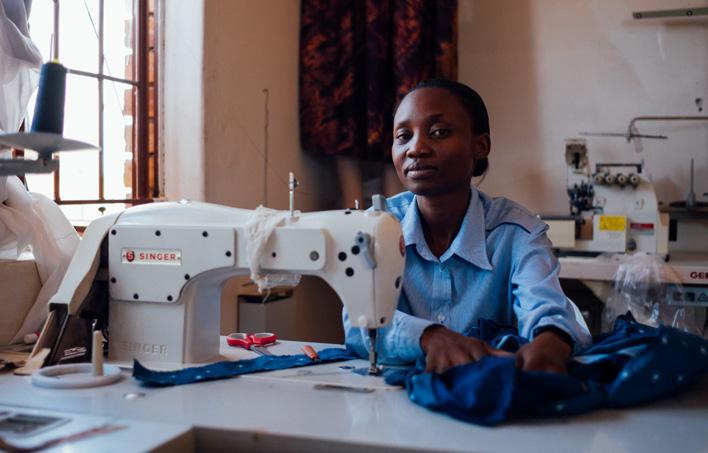
In the first full year since announcing the 12 goals, De Beers made meaningful progress in each of its priority focus areas—leading ethical practices, protecting the natural world, partnering for thriving communities and accelerating equal opportunity— despite ongoing challenges presented by the COVID-19 pandemic that continued to impact the company’s operating environment in 2021.


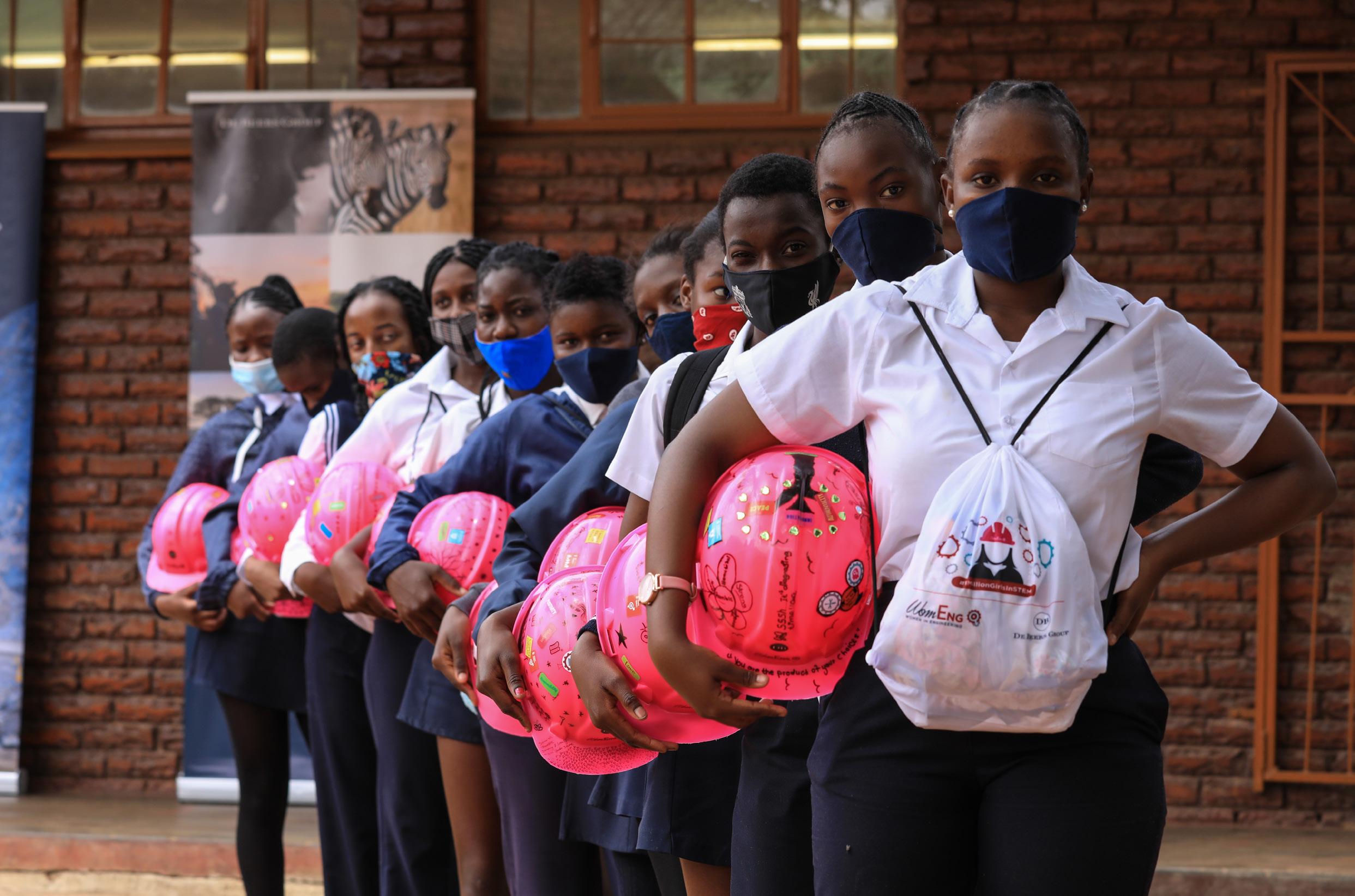
• Increased capacity of De Beers Group’s innovative diamond traceability blockchain platform, TracrTM, which now has the ability to register up to one million diamonds per week;
• Launched the pilot of De Beers Code of Origin, a consumer-facing trusted source programme;
• Brought the first dedicated GemFairTM parcels of ethically sourced artisanal and smallscale (ASM) mined diamonds to market (GemFair is De Beers Group’s initiative to support the formalisation of the ASM sector);
• Implemented a land reclamation programme in Sierra Leone to bring old artisanal mine sites back to productive farming use, supporting livelihoods and food security for local communities.

• Reduced energy intensity by 11% as De Beers strives to be carbon-neutral across its operations by 2030;
• Continued to progress a project to build a 60MW solar farm at Venetia mine in South Africa;
• Launched Okavango Eternal—a five-year partnership with National Geographic to help protect the critical source waters of the Okavango Delta in southern Africa;
• Continued to actively manage biodiversity and protect threatened species across approximately 500 000 hectares of protected land in southern Africa (the Diamond Route);
• Completed a strategy for addressing Scope 3 emissions in De Beers Group’s global supply chain.
• Supported more than 2 600 jobs through enterprise
development initiatives in southern Africa and supported more than 18 000 students at 25 schools in South Africa;
• Commenced delivery of the partnership with National Geographic, which includes commitments to support the development of livelihood opportunities for 10 000 people across Africa’s Okavango Basin and help ensure water and food security for more than one million people;
• Pledged $6.8 million to support vaccine procurement and rollout in De Beers Group’s host countries, including establishing vaccination clinics at the company’s operations for employees and community members;
• Invested $35 million in social investment initiatives.
Accelerating equal opportunity
• Announced an additional $3-million investment to extend the AWOME programme in southern Africa, which is focused on supporting women entrepreneurs to grow their businesses—more than 1 800 entrepreneurs have been supported to date;
• Engaged 1 500 girls in STEM (science, technology, engineering and mathematics) in southern Africa in partnership with WomEng and provided 21 scholarships to women studying STEM at a university in Canada, in partnership with UN Women and Scholarships Canada;
• Awarded 12 young jewellery designers in De Beers Group’s host countries training opportunities through the company’s Shining Light Awards competition;
• Launched the #BlackIsBrilliant campaign in partnership with RAD Red Carpet Advocacy, bringing together black jewellery designers with top celebrity stylists.
Beyond its Building Forever sustainability commitments, De Beers Group continued to make a vital contribution to its host countries and communities through tax and royalty payments, employment and local procurement, which totalled $4.7 billion in 2021. In addition, 80% of the revenue generated by the company’s operations remained within host countries.
Bruce Cleaver, CEO of De Beers Group, said: “As the first full year since announcing our ambitious 2030 sustainability goals, 2021 was a pivotal year for our business. We embedded the goals into our operational and commercial frameworks, established critical foundations and partnerships, engaged with stakeholders and took tangible steps forward— all while continuing to operate against a backdrop of COVID-19.
“Our Building Forever sustainability goals underpin our commitment to create a better future for people and the planet, and we will continue to build on our strong momentum throughout 2022 and beyond.”
The full report, titled “Building Forever: Our 2021 Sustainability Report”, includes a detailed overview of progress, including relating to each goal, and is available to download from bit.ly/3vGHDWB.

Illegal and unregulated artisanal gold mining on the Witwatersrand Basin, located south of South Africa’s Gauteng province, is an increasing threat to community, industrial and state security. Reports on turf wars between rival gangs (bit.ly/3bSYMWb), or shootouts between illegal miners and security officers (bit.ly/3w1HJYZ) are commonplace.
But recent incidents point to a spike in the scale of illegal activity, conflict and criminality.
In October 2021, approximately 300 illegal miners, known as zama zamas, attacked and shot
at police and security officers (bit.ly/3SJxO40) when the officers tried to prevent them from delivering food parcels to underground miners.
In June 2022, about 150 illegal miners stormed gold miner Sibanye-Stillwater’s mothballed Cooke shaft near Randfontein in an attempt to gain control (bit.ly/3SHLIng).
And in July, South Africans were reeling at the horrific robbery and gang rape of a film crew (bit.ly/3Qdryjn) at a mine dump close to West Village, a multiracial suburb of Krugersdorp on the West Rand.
West Village community members have since spoken out about being “prisoners in their own homes” (bit.ly/3C1lLsR). They attribute rampant crime in the area over the last few years to the influx of illegal mining—a situation that law enforcement officials seem unable or unwilling to control.
In the wake of these incidents, the spotlight must turn to the systemic reasons artisanal gold mining has become such a threat to peace and security. These include the state’s decades-long failure to nip an unregulated and illegal artisanal gold mining industry in the bud. These incidents are also the result of the failure to formalise artisanal mining as a livelihood strategy through appropriate policies and legislative provisions.
Artisanal gold mining in South Africa is out of control—mistakes that got it here



































Artisanal mining is a labourintensive form of mining that uses rudimentary tools and technologies. Other sub-Saharan African countries (bit.ly/3C3oxOw) recognise artisanal mining as a formal mining category. These include Burkina Faso, Côte d’Ivoire, the Democratic Republic of Congo, Ethiopia and Kenya.
Foundational policies in the early years of South Africa’s democracy did not support artisanal mining as a permanent livelihood strategy. The 1994 Reconstruction and Development Programme (bit.ly/2G18IuU) simply committed the government to encourage “small-scale mining”. This was on the proviso that safety, labour, environment and health conditions could be maintained. The 1998 Minerals Policy (bit. ly/3dpdLYq) identified artisanal with subsistence mining. It flagged the need for the state to employ resources to “control artisanal mining as effectively as possible.”
The 2002 Mineral and Petroleum Resources Development Act (bit.ly/3dkIdTz) only recognises large- and small-scale mining. It criminalises all mining outside these categories.
In addition, the 2005 Precious Metals Act (bit.ly/3zMfgrc) empowered the South African Diamonds and Precious Metals Regulator to regulate the acquisition, smelting, refining and beneficiation of gold. This removed the prior involvement of the South African Police Service and has been a key enabling factor for the unregulated gold mining industry.
An illegal artisanal gold mining industry takes root

South Africa’s Witwatersrand goldfields have produced over 30% of all the gold ever mined (bit.ly/3zK7PRa). But in recent decades, large-scale gold mining has declined precipitously. Between 2012 and 2019, the industry shed 42 000 jobs (bit.ly/3w1Iotr).
The Minerals Council of South Africa and police have identified a five-tier hierarchy (bit.ly/3dq4jnQ) in the illegal and unregulated gold mining industry. Illegal miners are on the bottom tier. Gangs and illegal mining bosses (bit.ly/3QGFRN0), licensed bulk buyers (scrap metal dealers and pawn brokers) at national or regional level, front company exporters, and international intermediary buyers and companies are the more significant criminal actors.

The Institute of Security Studies estimates that the approximately 30 000 illegal miners produce R14 billion (just over US$8 million) worth of gold per annum (bit.ly/3SP31mC). From the state’s perspective, this is “lost production”. The United Arab Emirates and Switzerland (bit.ly/3SLi8NF) have been identified as the primary export destinations.
Images: www.businesslive.co.za; www.dailysun.co.za
In this context, an illegal and unregulated gold mining industry, among the most lucrative and violent on the African continent, has taken root.





Thousands of illegal miners pursue artisanal mining as a permanent, though precarious, livelihood strategy (bit.ly/3QCVoOa). Recent PhD graduate Maxwell Chuma explored this (bit.ly/3SGgey1). He studied the natural, social, financial, human and physical capitals that frame artisanal mining in South Africa. He examined the push and pull factors that drive people into this high-risk activity.
The push factors include a loss of formal employment in the mining industry, lack of alternative employment opportunities, and drought conditions in neighbouring countries. The pull factors include the ease of accessing mineralised land, social capital provided by national and ethnic groups in control of illegal mining, and the relatively stable income.
The risks and illegality of the work itself, trespassing, the rampant use of mercury and the criminality of the sector (bit.ly/3w2Y2ET) make this dangerous and volatile work.
In 2014, the South African Human Rights Commission conducted investigative hearings into unregulated artisanal mining (bit.ly/3vUHoY7). The commission called for the state to institute an appropriate policy and regulatory framework to facilitate and manage artisanal mining as a livelihood strategy.

In March 2022, Minister of Mineral Resources and Energy Gwede Mantashe published the Artisanal and Small-scale Mining Policy (bit.ly/3drlHs4). The policy recognises the potential of artisanal mining as a livelihood strategy. But it reserves the permit system for South Africans. It tasks a National Co-ordination and Strategic Management Team to “halt” illegal mining.
The policy has been criticised for its failure to take public comments into account. It has also been criticised for its fantastical assumption that “platoons of illegal miners will miraculously stop their illegal activities overnight.” (bit.ly/3SJyHJS) Implementing the policy will also require legislative amendments, which may take years to finalise.
Mantashe, as well as the department, must urgently speed up attempts to formalise artisanal mining as a livelihood strategy. The department should properly engage the mining industry and civil society in this process.
At the same time, a coordinated transnational effort to break the stranglehold of the criminal syndicates must continue.
Applying a set of principles (bit.ly/3bSpUon) agreed by countries of the OECD
(Organisation for Economic Co-operation and Development) on managing supply chains in conflict and high-risk areas could also help manage the problem.
Finally, the powers conferred on the precious metals regulator need to be revisited. The changes need to ensure property security checks on sellers can be conducted and patterns in the supply of gold can be determined. Unscrupulous licensed bulk buyers of illegally mined gold must also be identified and brought to book.
Tracy-LynnField Professor of Environmental and Sustainability Law University of the Witwatersrand
Dr Maxwell Chuma Facilitator, Moderator and AssessorLearnEx Corporate Training
Diesel Electric Services has become a preferred partner

(PTY) LTD has been involved in the design, manufacture, delivery, installation, commissioning, service, maintenance and associated repairs of turnkey power infrastructure solutions in the mining industry since inception in 1993.
The company’s expertise lies in both greenfield sites as well as retro fitment and upgrades on existing infrastructure. Our strength in sitespecific solutions is what makes us a leader and preferred partner in the market.
In-house capability includes for regulatory approval associated with environmental impact assessments as well as fire department registration. To assist with local requirements with regard to regulatory approvals, an inhouse fuel containment system was development which varies between a two-hour and fourhour fire rating. This is engineered in accordance to client-specific requirements.

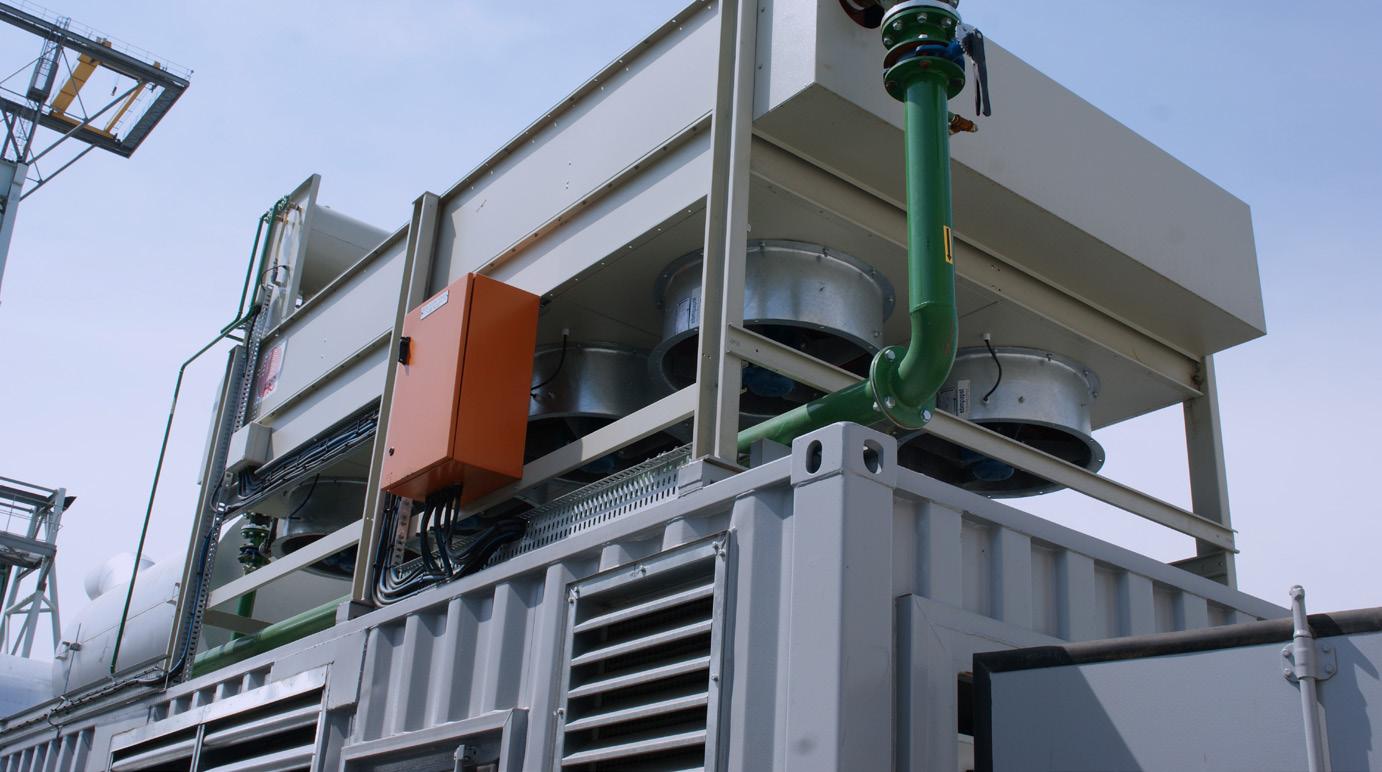

The staff complement consists of 550 full-time employees, separated into many teams, and managed by competent supervisors and managers i.e. Sales, Contracting, Manufacturing, Installations, and Technical Support, among others. This ensures a first-class, quick and reliable response to any possible client request or need.
The service department boasts a staff complement of 71 field technicians and 22 employees to assist with the administrative side, and are fully conversant in Pastel and the issuing of quotations.
The manufacturing facility is around 50 000 square metres of working space. At present there are two panel shops totalling 8 500 square metres, where manufacturing takes place.
These panel shops are fully equipped for basic sheet metal work, busbar bending and in-house programming of different control interface solutions offered to customers.
IEC/SANS 60439 requires detailed testing to confirm that one’s calculations are correct; this covers busbar supports, busbar spacing, riser supports, temperature rise, ventilation requirements, neutral bars support and earth bar mountings being the most important.
IEC/SANS 61439 allows verification without actual destructive testing being used.
By using successful FTT/PTT results from IEC/SANS 60439 in IEC/ SANS 61439, we have been able to complete a sequence of tests using the destructive tests covered by IEC/SANS 60439 as the verification process covered by IEC/SANS 61439.
Our CIDB accreditation includes for an 8EB, 8EP (Electrical) and 7ME (Mechanical) CIDB rating, proving we have excellent abilities to perform in the industry. Currently we are in the process of applying for an 8ME rating testimony to our mechanical capabilities and associated achievements.
Our combined technical expertise exceeds 1 100 years —that can only be obtained by years of experience.
For additional information, contact the company: Tel: 086 110 6633 sales@dieselelectricservices.co.za www.dieselelectricservices.co.za
Mining is not typically associated with visions of a circular economy. But if the world is to transition to a lowcarbon future, more minerals and metals will be required, not less. This shift will require vast volumes of copper, lithium, cobalt, platinum, chrome and manganese.
The circular economy is not a new concept, but it has been growing in importance —recently promoted by influential organisations such as the Ellen MacArthur Foundation (bit.ly/3QyxDHk) and the World Economic Forum (www.weforum. org/topics/circular-economy).

In our current economy, we take materials from the Earth, make products from them, and eventually throw them away as waste—the process is linear. In a circular economy, by contrast, we stop waste being produced in the first place.
The circular economy is based on three principles, driven by design. First eliminate waste and pollution, then circulate products and materials at their highest value, and finally regenerate nature. It is underpinned by a transition to renewable energy and materials. A circular economy decouples economic activity

from the consumption of finite resources. It is a resilient system that is good for business, people and the environment.
Africa is endowed with abundant mineral resources including gold, silver, copper, uranium, cobalt and many other metals that are key inputs to manufacturing processes around the world. However, extracting those precious resources from the ground comes at an environmental cost that is increasingly coming under scrutiny, and that is where circular thinking can play a huge part.







The African Circular Economy Alliance (ACEA) is a governmentled coalition of African nations with a mission to spur Africa’s transformation into a circular economy that delivers economic growth, jobs and positive environmental outcomes. By adopting circular economy principles, Africa’s mining industry can seize opportunities to reduce costs while mitigating risks associated with shifting consumer and investor preferences, and new regulations and standards.
According to the ACEA report, “Increasing Circularity in Africa’s Mining Sector” (bit.ly/3w8PYCA), given the economic contribution of mining to African countries, the circular economy would significantly contribute to creating a sustainable mining industry. For countries that depend on mining as the primary economic activity,
it contributes considerably to their foreign earnings. For example, Botswana mining has accounted for roughly 85% of national foreign exchange earnings, 33% of government revenue, and 25% of gross domestic product for the past four decades. The mining industry has a critical role to play in supporting the transition to a circular economy.
As we move along the energy transition and the demand for Africa’s mineral wealth increases, adopting a circular economy strategy can assist the mining industry adapt to increased pressure on limited resources. There are, however, challenges that need to be overcome in this circular journey, including deficient infrastructure. The lack of clean energy resources for the mining sector will impede the drive to reduce carbon emissions in the industry.
Part of a circular economy strategy is to optimise the use of resources, therefore designing efficient systems that use the circular economy principles will reduce consumption intensity and the cost of sourcing resources. An example of this can be witnessed with Syama Gold Mine’s shift to renewable energy from its existing source of power: a 28MW diesel generator. The mine signed a 16-year contract for a hybrid power plant with Aggreko (bit.ly/3ppL2FF). In 2020, Syama Gold mine’s cost of electricity decreased by 40% and carbon emissions by 20%.
One of the benefits of the circular economy is its ability to decrease operating costs by increasing operational efficiency.





The ACEA identified three crucial circular economy principles for the African mining industry to engage with. First to recycle, reduce and reuse resources and waste. Secondly, to regenerate natural resources, and finally to design out waste.
One of the chief areas for reuse comes in the use of water by the mining sector. Water is used to process minerals, transport slurry and control dust—and a large mine can use as much as 30 418 megalitres each year, enough to feed more than half of Africa’s population for a day. According to the ACEA, the mining industry is the second-largest water user, right behind agriculture, in South Africa. Effective management of clean water and wastewater is key to maintaining supplies of this resource.
The use of water can be decreased if the mines’ wastewater is recycled, reused, concentrated and reclaimed. Mining companies can improve wastewater management in three ways: lining waste and tailing dams to avoid water seepage; putting wastewater in tanks to prevent evaporation; and filtering water from slurry/ sludge/tailings before storing the waste in dams. Anglo American is developing a technology that will close the loop by creating a sealed system that increases efficiency and directs water recycling and reuse (bit.ly/3ppLqnB).
Other areas of the circular economy that fall into this category include recycling and reusing vehicle parts; repurposing waste rock; recycling and reprocessing tailings; recycling and reusing construction materials; rehabilitating mines for economic development; and recycling food waste for energy generation.
Mining uses a lot of energy, there is no escaping that. It is crucial throughout the life cycle of a mine, from exploration to processing the final product. Traditionally, the sector has relied on diesel and electricity from the grid to meet these needs. For example, figures from Glencore show that it uses up to 210 petajoules of energy annually—equivalent to the energy consumption of around 12.7 million people in Africa. This high energy use comes with an elevated level of carbon emissions.
By switching to renewable energy resources such as solar and wind energy to power mining operations can help regenerate natural systems. When compared to traditional diesel-powered generators, renewable energy is cheaper and produces less carbon emissions. One mine that has benefited from a transition to renewables is the Syama Gold Mine in Mali (pictured on opening page).
A more forward-looking and less accessible solution to reducing resource consumption and recycling waste is designing smart mines with the environment in mind. This entails building sustainability into the design process from the outset and looking to invest in renewable energy such as solar and wind, and employing technologies to eliminate water usage in mines. This would be most feasible for upcoming mining projects on the continent.
Some companies are already putting redesigning mining operations into consideration. Anglo American is currently investing in exploring a FutureSmart Mine (bit.ly/3c65qsn) that will be circular, save costs, increase efficiency, and ease mines’ operations. Pictured above is its nuGEN hydrogen-powered mine haul truck.
 Mark Venables Consultant African Mining
Mark Venables Consultant African Mining
Indaba
In a circular economy, we stop waste being produced in the first place.








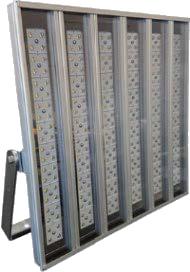




The recent passing of Nigeria’s new petroleum act heralds an exciting new chapter for Africa’s energy sector—but it’s complicated

The Joburg Indaba will be back in person this year at the Inanda Club, Johannesburg on 5th & 6th October. It is a highly influential mining industry platform, renowned for its straight talk, refreshing insights and collaborative atmosphere. Since its inception, the Joburg Indaba has developed a reputation as a highly regarded gathering that unpacks a wide range of critical issues affecting all stakeholders in the mining industry.

This year celebrating its 10th Anniversary edition, the Joburg Indaba brings together CEOs and senior representatives from the major mining houses, investors, Government, parastatals, organized labour and experts from legal and advisory firms.

Plus, the Gala Dinner returns on 4th October, where we will be inducting new members into the SA Mining Hall of Fame!



The recent passing into law of Nigeria’s Petroleum Industry Act (PIA), and the establishment of the Upstream Petroleum Regulatory Commission (www.NUPRC.gov.ng), marks the beginning of an exciting new era for the energy sector in Nigeria, West Africa and the continent at large.
Policy and regulatory clarity are essential to the development of Africa’s energy resources, and the oil sector in particular. The new act confirms that Africa is taking control of its own resources and setting the agenda for how they will be deployed.

The passing of the act follows decades of work to evolve the sector in line with the needs of the energy business in the industry, the communities impacted, and the Nigerian economy at large. However, the act is complicated, its language ambiguous, and its workings yet to be fully understood.
The Nigerian oil industry has grown significantly, and the energy landscape has changed enormously—hence the need for a new approach.
Nigeria remains Africa’s leading oil producer, with production of 86.9 metric tonnes during 2020 (bit.ly/3QFxEca). At the same time, oil plays a significant part in Nigeria’s domestic economy, with the oil and gas sector accounting for about 5.8% of the country’s gross domestic product (brook.gs/3AqpBdN) and 95% of its foreign-exchange earnings in 2019.
The passage of the act has come with a renewed assertiveness in the Nigerian oil sector, with underdeveloped assets being reallocated (bit.ly/3QxbU2p) and
CEO Gbenga Komolafe signalling a commitment to building synergy and smooth industry operations in the national interest (bit.ly/3SZKc06).
“The commission is very deliberate in identifying and promoting new projects and new field developments to boost the national oil production” says Komolafe. “We will continue to work with all stakeholders on these strategic areas.”
The new PIA dispensation will allow for the more efficient and sustainable allocation of Nigeria’s oil assets in the best interests of Nigerians and African people at large.
That said, the new environment is deeply complex, and the ambit of the new regulations is vast.
Image: www. businessday.ng
NUPRC
The Nigerian oil industry has grown significantly, and the energy landscape has changed enormously —hence the need for a new approach.
• South Africa Law Firm of the Year Chambers Africa Awards, 2021 & 2022
• ESG Initiative of the Year African Legal Awards, 2021
• Women Empowerment in the Workplace Award (Overall Winner: Southern Africa) Gender Mainstreaming Awards, 2021
• M&A Firm of the Year: South Africa International Financial Law Review Africa Awards, 2021
• Tax Firm of the Year: South Africa International Tax Review EMEA Tax Awards, 2021

The NUPRC, for instance, is tasked with ensuring compliance to petroleum laws, regulations and guidelines, as well as monitoring operations at drilling sites, wells, production platforms and flow stations, crude oil export terminals, refineries, storage depots, pump stations, retail outlets and pipelines.
It must also supervise all petroleum operations carried out under licences in the country, monitor operations to ensure they are in line with national goals; ensure health, safety and environmental compliance; maintain records on petroleum reserves, production, licences and leases; advise government on technical and policy matters, process licence applications; collect government revenues and maintain and administer the National Data Repository.
Besides the NUPRC, the Petroleum Act also established the Nigerian Midstream and Downstream Petroleum Regulatory Authority (www.NMDPRA.gov.ng). Together, these authorities are responsible for the technical and commercial regulation of petroleum operations in their respective sectors, and have the power to acquire, hold and dispose of property.
The act provides for the Nigerian National Petroleum Company to be run as a quasi-commercial enterprise, with its shares jointly held by the ministries of finance and petroleum.
The act also establishes the Host Community Development Trust Fund, which is geared to providing social and economic benefits for host communities where petroleum resources are located, and to enhance peaceful co-existence between licensees or lessees and host communities.
The PIA further establishes a hydrocarbons tax, to be levied on income from oil companies’ onshore resources such as crude oil, condensates and natural gas liquids.
The wide-ranging area of responsibility covered by the PIA, and the use of terms that have yet to be clarified in court, makes for a complicated piece of legislation that bears further explanation.


“Nigeria is to be congratulated on the progress it has made in codifying the terms for the exploitation of its oil assets,”
says Paul Sinclair, Africa Oil Week vice-president of Energy and director of Government Relations. “However, the global oil industry is clamouring for the chance to gain further clarity on the new laws. We look forward to doing just that, at Africa Oil Week [3 to 7 October, in Cape Town].”
Africa Oil Week offers pioneering insights, from ministerial panels to strategic outlooks designed to drive investment into the African upstream for the benefit of the continent. At the heart of the event are some of the most compelling insights into the upstream strategies of governments from across the continent.
Global oil industry investors will have an opportunity to inspect the granular detail of Nigeria’s Petroleum Industry Act and how they can get involved, where NUPRC CEO Komolafe and other senior Nigerian oil officials will engage with stakeholders on the new dispensation.
Africa Oil Week africa-oilweek.com









While South Africa has been preoccupied with rolling electricity blackouts, security of liquid fuels supply has been overlooked—even though, by my calculations, by value of sales it is 60% larger than electricity sales.
The one liquid fuels related story that attracted attention in the local media (bit.ly/3dNwZr1) was the temporary closure of an inland oil refinery due to delays in crude oil supplies. The refinery is owned by Natref, a joint venture between the chemical and energy company Sasol—the majority shareholder—and TotalEnergies.
No details have been given about the closure. But it is a rare occurrence and probably a consequence of disruptions to global logistics and oil supplies caused by Russia’s invasion of the Ukraine.
Natref is the last surviving oil refinery in South Africa. Three others were closed in the past two years.
These refinery closures and the possible permanent closure of the Natref refinery are shots fired
in the long-running contestation between the oil refiners and the government, which has been trying to introduce cleaner fuels specifications (bit.ly/3dNj8kd)— and, in parallel, policies requiring oil companies to keep some stocks to act as a buffer against occasional supply interruptions.
Both policies are in line with international trends. The attempt to move to cleaner fuel specifications began in 2006 and is aimed at assisting the domestic auto manufacturing industry, which produces mainly for European markets, where engines need to match Europe’s cleaner fuels.
The oil industry’s response to the government’s cleaner fuels initiatives has been robust. Initially, it sought to blackmail the government by threatening closure unless the government gave it the capital to upgrade its refineries, without any consequent ownership rights. The industry euphemistically termed this a “cost recovery mechanism” (bit.ly/3dNDry0). The government eventually backed down from its
deadlines. But it did not succumb to the demands for cash gifts.
In the latest round, the two Durban refineries made good on their threats: Engen (Petronas) in 2020, following an explosion and fire (bit.ly/3dOlMq7), and Sapref (Shell and BP) after its temporary closure during the insurrection in July 2021 (bit.ly/3c9SstN). Natref appears to be playing a waiting game on the government’s latest deadline, which has been shifted from 2023 to 2027.
If the government holds the line, Natref may also close, with possible knock-on effects for Sasol’s coalto-liquids plant in Secunda, whose production is partially integrated with that of Natref.
The closures of South Africa’s small, old and inefficient refineries are economically painful in the short term. But they also offer the prospect of better outcomes—economic, environmental and security of supply—if the government acts sensibly, particularly in relation to electric vehicles.

The government has pursued an import substitution industrialisation approach to the liquid fuels industry since the 1930s and has used various regulatory instruments (bit.ly/3AhfPcC) to protect the oil refiners.
But the need to move to cleaner fuels to support local auto manufacture has proved to be a tipping point. The difficulty for the auto manufacturers is that it does not make commercial sense to manufacture two engines for each vehicle—one for South Africa’s dirty fuels and another for Europe’s cleaner fuels. The domestic auto industry has, like refining, long been protected by the government. It occupies a key position at the heart of South Africa’s manufacturing industry and its interests appear to have been chosen over those of the oil refining industry.
The refinery closures hold implications for the future of auto manufacturing and transport in the country.
In the short term, fuel imports are meeting demand. But the auto manufacturers face a new threat to their European markets: electric vehicles. Some local auto manufacturers have appealed to the government to include electric vehicles within its support and subsidy programmes. At present, the import of electric vehicles is actively discriminated against. But the Department of Trade, Industry and Competition is dragging its heels.
There is a good prima facie case for South Africa to switch to electric vehicles. Imported US dollar–denominated petroleum could be substituted by mainly rand-denominated solar and wind-based power generation. The productivity gains from more efficient electric vehicles and the impetus to South Africa’s emerging battery

manufacturing industry are part of the case. This could also be seen as the ultimate version of the government’s long-running import substitution industrialisation.
The closure of the oil refineries has actually made it easier for the government to switch its attention to electric vehicles, which would also assist in meeting its international emissions targets. It also means the adjustments envisaged in the just energy transition (bit.ly/3QYTmb5) have, in effect, already happened in the refining industry.
Returning to the question of security of supply for internal combustion engines, there are also advantages for the government in so far as strategic stocks are concerned. Since there are fewer oil refineries, less crude oil stocks are required. This may be a good thing, given the troubles associated with them.
Firstly, there is the economic argument that strategic stocks sterilise large quantities of cash. In turn, this has a high opportunity cost in South Africa with its many other pressing social needs.
The Minister of Mineral Resources and Energy told Parliament in 2022 that the strategic oil stocks were valued at R1 750 764 252 (bit.ly/3c8EVmj).
Secondly, there are governance issues. In 2015, the Strategic Fuel Fund illegally sold 10.3 million barrels (the entire stock) at bargain basement prices to oil traders. In 2020, the High Court returned the stocks to the fuel fund (bit.ly/3dNjveB).
The closure of oil refineries has inadvertently provided a windfall for fuel users: it has allowed the government to sell off some of the stocks (bit.ly/3cfs8yb) and use the proceeds to subsidise fuel prices during an oil price spike.
These subsidies are to be partially funded by the sale of strategic oil stocks to the value of R6 billion (bit.ly/3c8EVmj). By my estimates, this represents approximately half of the strategic stocks, which leaves a bit more than the surviving refineries need.
A much better solution would be to hold strategic stocks of refined products in the inland market, which is approximately 60% of the South African market (bit. ly/3Adah34). Although discussed in the government at least 20 years ago, this option has not been pursued.
Does the closure of the refineries affect South Africa’s security of supply? Not much. The country has merely swapped reliance on crude oil imports for refined product imports. Rather than international supply risks, the bigger risks seem to be domestic (bit.ly/3py9vsz).



The 1998 White Paper on Energy Policy (bit.ly/3Kf9GTc) said that the government would maintain three months of oil supplies. But there has never been a budget allocation to allow the country to reach this level.

In 2012, the government gazetted a draft plan proposing that its holdings be reduced to 60 days, supplemented by the industry holding 14 days of refined products. The draft has never progressed to a final policy, probably due to financial constraints and the industry’s unwillingness to foot a part of the bill.
There has been no shortage of ideas and policy proposals on strategic stocks in democratic South Africa. The shortage is of cash to fund the ideas. Given South Africa’s increasingly constrained finances, there seems to be little prospect of security of supply being resolved soon. Security of supply may only be improved when South Africa switches to electric vehicles.
Rod Crompton Adjunct Professor African Energy Leadership Centre Wits Business SchoolWhat is the government’s policy on the security of supply?
The refinery closures hold implications for the future of auto manufacturing and transport in the country.
N(ULP and LRP) and oil. We supply products as a wholesale to larger commercial clients and enter into supply agreements with depots, retailers, mining, agricultural and similar commercial clients.




We source our products from various refineries and storage facilities in South Africa, such as Sasol (supply from Secunda, Natref), Caltex and Engen (supply countrywide) and Total (supply from all Total depots).



This, in turn, makes it possible for us to negotiate rebates for contracts/potential business deals and clients, should the volumes/ amounts in litres/kilogrammes be of viable sorts.
We offer delivery of products to our customers‘ door, wherever they are in South Africa or the Southern African Development Community
Lesotho, Malawi, Mozambique, Namibia, Swaziland, Tanzania,
petroleum industry. We supply a range of underground and above-ground storage tanks, tank ancillary equipment and diesel bowsers (diesel carts)—and export








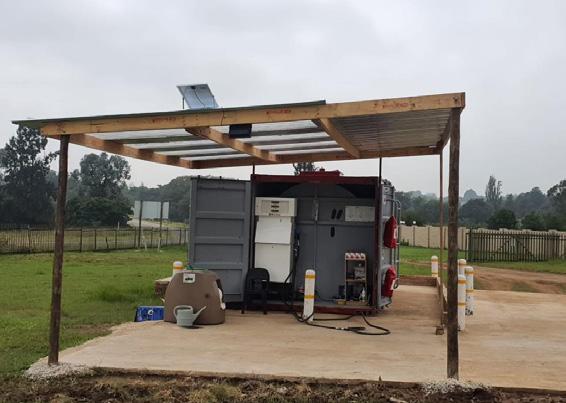
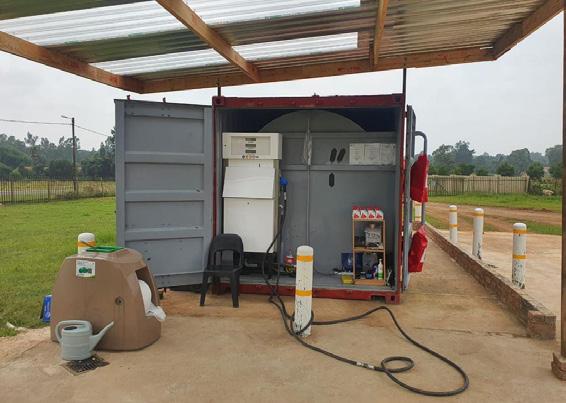





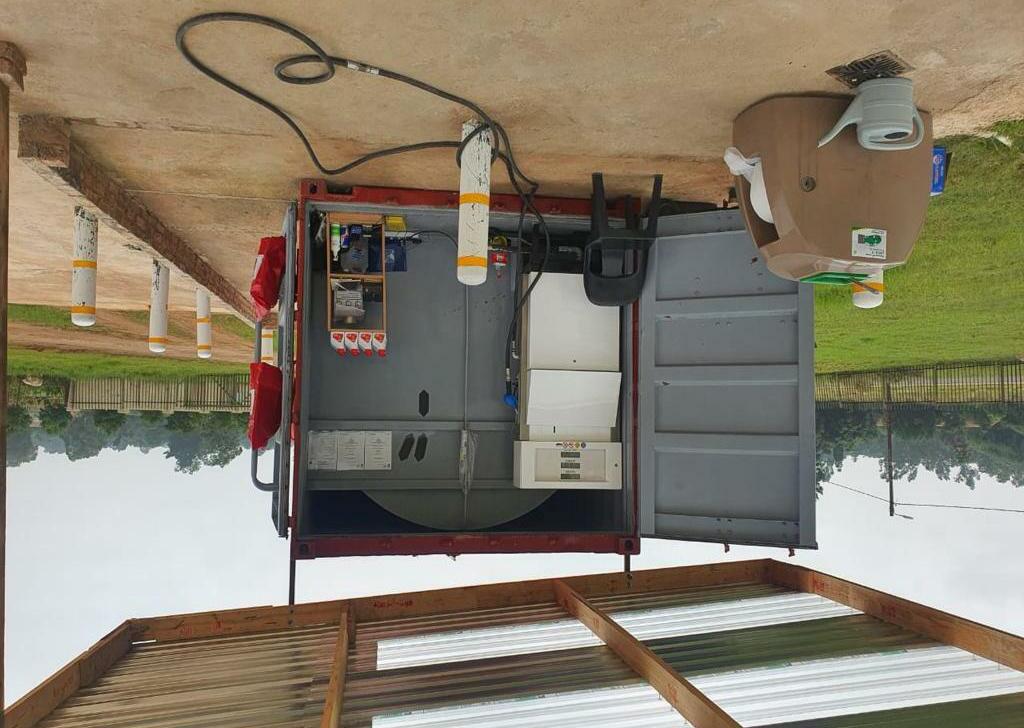
Our service is our reputation and credibility. We are one of the fastest delivery services, with excellent sales and expertise in the field.





www.njizepetroleum.co.za
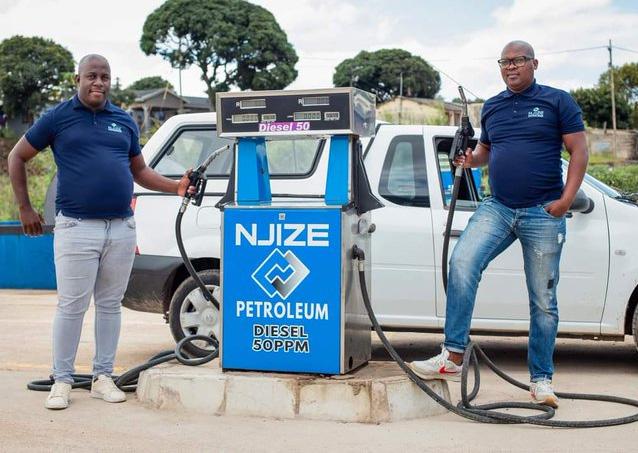

Njize Petroleum provides a one-stop service

Companies operating at sea must embrace conservation and sustainability —and not wait to be forced into it

Compared to all other institutions in the world, corporate enterprises have the most significant impact on the environment. According to the Carbon Majors Report published by the Carbon Disclosure Project in 2017 (bit.ly/3d7Ou5d), 100 companies are responsible for 71% of global emissions.
Given corporations’ contributions to climate change —and other environmental issues— executives need to understand both the impacts and solutions to the world’s environmental concerns. As a corporate strategy and innovation researcher, I was curious about the level of sustainability understanding and innovative problem-solving among top executives at companies that operate at sea, including oil & gas, shipping and logistics, mining and minerals, cruise lines and agriculture.
The United Nations’ Sustainable Development Goals (sdgs.un.org/goals) provide a blueprint for sustainable organisational practices. Corporations should be cognisant of these areas and make productive efforts toward sustainable development. For companies operating at sea, marine conservation and the sustainable use of oceans, seas and marine resources should be a top priority.
Growing marine traffic is expected to add to friction—such as collisions or the introduction of invasive species—between ships and ocean life. Global transportation and logistics forecasts suggest maritime traffic could increase by as much as 1 209 percent by 2050 (go.nature.com/2HFpErf). The preservation of ocean life requires deliberate measurement and management in the form robust environmental, social and corporate governance (ESG) reporting by those companies operating at sea.
ESG reporting, however, is still in its infancy in the ocean industries (bit.ly/3QEjYxE) and marine impact measures are more qualitative than quantitative. My recent research shows that reporting practices on ESG among companies operating at sea are not a top priority, which puts the health of the marine environment at risk.

Today, most CEOs subscribe to the stakeholder theory (bit.ly/3BB1Pwg) that argues a firm’s purpose is to create value beyond its shareholders.
Since the 1960s, stakeholder theory has been the dominant perspective among businesses. Corporate social responsibility (CSR) is a firm’s commitment to fulfil its social and environmental obligations in pursuit of its economic objectives (bit.ly/3TYmgui).
According to a 2006 study by leading strategy researchers, Michael Porter and Mark Kramer (bit.ly/3dgZZau), not only does CSR
benefit society, it also enhances competitiveness and business performance among participating enterprises. CSR “has emerged as an inescapable priority for business leaders in every country,” they write.
Over the past 20 years, businesses have also focused on measuring their environmental and social responsibility efforts. In contrast to the ideals and goals CSR qualitatively identifies, ESG reporting quantitatively measures firms’ CSR impacts and progress.
My research explores current ESG reporting practices among companies operating at sea. Based on 14 interviews with large multinational companies operating at sea and an examination of their ESG reports, I found:

• A lack of consistency among reporting measures;
• Superficial organisational knowledge and reporting; and
• Industry change will only occur as a result of consumer advocacy or regulation.
Preserving life below water is one of the UN’s Sustainable Development Goals. But many of the reports examined in my study excluded marine life and ocean sustainability metrics.
Among the reports that included information on marine life, the approaches to measure impact and progress had not been standardised, yielding poor and ineffective quantitative environmental. The executives of these companies described the importance of action and disclosure of progress in this area, but lacked the specific knowledge to measure and manage their impact.
It is evident from the reports and interviews that ESG reporting standards must be established, and precisely indicate how companies can fulfil their social responsibility in this area.
My research also confirmed prior work that suggests ESG reporting in the area of marine life is qualitative and superficial.
Many executives communicated that they face myriad public issues and do not prioritise reporting on marine life, such as the impacts
their operations may have on marine animals, their efforts to preserve biodiversity, and ocean pollution. Instead, they said their ESG reports were designed to provide a high-level summary of their commitments and progress toward ocean sustainability.
However, executives acknowledged their operations at sea are deemed to be less concerning to the general public as compared to other issues because they were less visible. Accordingly, ocean life sections of ESG reports were not as in-depth as others such as clean energy.

The final and most concerning finding was the reactionary approach for the executives to change. They described how they would take necessary steps toward change, but only out of necessity for survival.
As one CEO stated: “There are so many issues and we can’t always be proactive. If we were required to make changes to how we operate and report, we always would. But the push would have to come from the public or regulators.”
This is a problem, given the importance of the ocean’s
ecosystem to overall planetary health (bit.ly/2SKHzms). Tiny ocean plants called phytoplankton, for example, produce 50% of the oxygen in the air we breathe. There is, however, some hope.
As Peter Drucker, an Austrian American management consultant, educator and author, aptly stated: “What gets measured gets managed.” (bit.ly/3RHngSb) Without meaningful, specific and quantitative measures to assess progress and innovations that support change, success in reaching environmental goals is unlikely.
The findings of my research are somewhat promising, as they show executives are willing to commit more resources to sustainability efforts. However, it is evident there needs to be a clear path and support for such efforts from all stakeholders. It is concerning that sustainability efforts of our most precious resource are nebulous and not considered a top priority.
Grant Alexander WilsonAssistant Professor: Marketing Hill and Levene Schools of Business University of Regina
ESG reporting standards must be established, and precisely indicate how companies can fulfil their social responsibility in this area.
Environmental Social Governance (ESG) is a global phenomenon that has become the industry standard for investors to evaluate the long-term sustainability of mining organisations. This movement started in 1997 when the Global Reporting Initiative (GRI) developed the first and most widely used standards for sustainability reporting. ESG has evolved into a global sentiment that compels companies to adopt frameworks that provide transparency to sustainability goals. These events led to the publication of standards by the Sustainability Accounting Standards Board (SASB) in 2018. ESG compliance is a mine’s responsibility to implement processes that minimise pollution, reduce the impact on local communities and create longevity through sustainability for all its stakeholders. Shareholders expect board members to implement strategies, initiatives, goals and targets to ensure long-term profitability.
The mining industry will forever be criticised for its environmental and social impacts. However, in the years, many companies have taken steps to improve their ESG performance. One way they are embracing ESG is by increasing their transparency and disclosure around issues such as water use, and energy consumption, social responsibility and ethical behaviour.



Mining companies’ most significant challenge is implementing a digitised ESG solution. The ESG framework requirement is so vast that the executive and management teams often don’t know where to start. Industry leaders like XGRCSoftware have developed implementation roadmaps underpinned by a range of integrated system solutions. They’re designed to meet all the requirements of an organisation’s ESG strategy, from planning to monitoring and reporting, by aggregating ESG data in a single, auditable framework that drives compliance and corporate sustainability.
ESGs plays a pivotal role in the mining industry mainly because it is devoted to improving the living conditions of communities surrounding these mining sites. They plan it through various means by providing them with training courses, microenterprise development programs and more, which support sustainable livelihood opportunities. It helps to achieve social goals like gender equality and increased employment rates among youth. All this data should be available in a single, auditable environment that transforms all this information into an Asset (DataAsAnAsset).
An ESG software solution, implemented and maintained correctly, is a potent tool that creates longevity and sustainability through protecting the environment, stakeholders like communities and employees based on international best practice standards. It ensures sustainable growth for all different types of stakeholders. XGRCSoftware can help mining companies today by implementing a digital ESG solution to assist management and executive teams to be more competitive tomorrow. ESG should become an integral part of any organisation’s operations.

www.xgrcsoftware.com info@xgrcsoftware.com

High-grade lithium has been discovered in Nigeria (bit.ly/3dOTegi). In 2019, the total production volume of lithium—not high-grade—in Nigeria reached 50 metric tonnes (bit.ly/3Kfzoa3). This is small compared to Zimbabwe, which produced 1 200 metric tonnes the same year (bit.ly/3pE0NsK). The Conversation Africa’s Wale Fatade asked geologist Ibrahim Garba for his insights.
What is lithium and why is it important?
The Geological Agency described the lithium as high-grade because what has been found has between 1% and 13% oxide content. Normally, exploration begins at levels as low as 0.4%. Grade (in %) is a measure of concentration of the lithium in the minerals and/or rocks
that contain it. Therefore, the higher the grade, the more the economic viability. Higher grades are very rare for metals like lithium.
Lithium is a metallic mineral in very high demand by manufacturing industries. Seven years ago, the bulk of demand for lithium was split between ceramics and glasses (35%) and greases, metallurgical powders, polymers and other industrial uses (over 35%). Less than 30% was for batteries (bit.ly/3wnexvw). But by 2030, batteries are expected to account for 95% of demand (bit.ly/3PJa2Ck).

Lithium-ion batteries are generally more expensive (bit.ly/2TJFFR7), but have better performance and are becoming the preferred technology. The different types (bit.ly/3R1bwZL) are:
• Lithium-cobalt oxide battery—It is used in consumer electronics
and is finding application in electric vehicles. It is relatively cheap.
• Lithium nickel manganese cobalt—a newer, higher performing range of battery chemistry. It is mainly developed for the electronic vehicle market, but is finding a wider use because of its increasing costeffectiveness.
• Lithium iron phosphate—the safest technology with relatively high performance, but relatively expensive. It is very popular in China, but is likely to become overtaken by lithium nickel manganese cobalt over the longer term.
• Lithium nickel cobalt aluminium oxide—developed to reduce cobalt consumption and is known as a solid performer and of reasonable cost. It is also becoming popular outside China.
For the moment, the find in Nigeria simply points to the potential of Nigerian pegmatites for lithium resource. Issue

Lithium-ion batteries are used in mobile phones, computers, electronics, energy storage systems and electric vehicles. The forecast is that they will dominate the lithium market over the next decades. However, there are many different types of lithium-ion battery for different applications.
Lithium and most lithium minerals are mined along with other high-value metallic minerals such as tin, niobium-tantalum (columbite-tantalite) and uranium (in pyrochlore).
Greenbushes mine in Western Australia is the largest hardrock lithium mine in the world. Tantalum is also mined there. In 2019, the mine’s output capacity doubled to 1.34 million tonnes of lithium concentrates annually after a second processing plant was added (bit.ly/3AeNXpB).

Global lithium mine production hit a record high of 100 000 tonnes in 2021 (bit.ly/3chdu9N) —a 21% increase over 2020 (82 500 tonnes).
Due to the growing interest in clean energy, the demand for lithium has skyrocketed as most countries draw plans to phase out fossil fuel vehicles and switch to zero-emission electric vehicles. The underlying demand for lithium is expected to rise proportionately to the production and sales of those vehicles. Lithium production globally grew from 28 100 metric tonnes in 2010 to 86 000 in 2019 (bit.ly/3dL4bzk). The challenge will be in supplying the market with enough lithium.
Three countries—Australia (40 000 tonnes), Chile (20 600 tonnes) and China (14 000 tonnes)—mine about 86% of the world’s lithium. Others are Argentina (6 200 tonnes), Brazil (1 900 tonnes), Zimbabwe (1 200 tonnes), United States (900 tonnes) and Portugal (900 tonnes), according to 2020 data (bit.ly/3dOW4BT).
The largest importers of lithium are South Korea, China, Japan, US and Belgium (bit.ly/3wl0CGE).
The price of lithium was averagely US$2 000 per metric tonne in 2002, rising to US$18 000 in 2018 (www.metalary.com/ lithium-price).
For the moment, the find in Nigeria simply points to the potential of Nigerian pegmatites for lithium resource. Full exploration will be necessary.
The lithium supply chain (bit.ly/3KfnNIb) involves converting lithium minerals to lithium concentrates and lithium hydroxides.
The first and most important point is that the discovery does not equate to a commercial find. In fact, it should be taken only as a first step in the long journey to be established as a commercially viable deposit that can be mined and extracted to a form that can be sold to the consumer.
In reality, only one or two of hundreds of such ‘discoveries’ (finds) may end up being a mine after going through the many stages of exploration and development. Only then can a value be attached to such a ‘discovery’.
It can take five to 10 years to fully explore a small- to medium-size deposit and take it to production. This is provided there are no unforeseen technical, financial and other challenges. Only in few, very exceptional and highly viable situations can we expect a lesser time frame.
Quite a number of factors can make or mar the development journey. These include proving
Image: www.nsenergybusiness.com
Greenbushes lithium mine in Western AustraliaDue to the growing interest in clean energy, the demand for lithium has skyrocketed

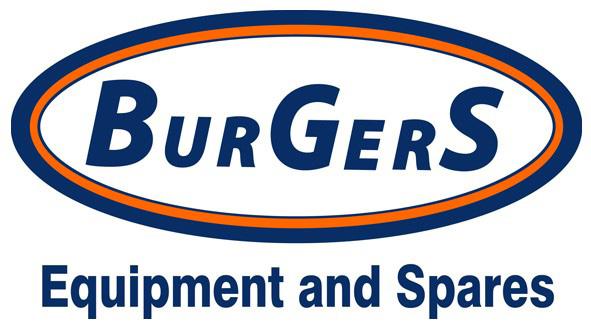
was founded in 2012 and we are proud to say that this year would be our 10th year serving customers in the mining and the construction industries.
We are a family-owned business that have been in the industry for well over thirty years. We offer a full line of earthmoving equipment backed by world class components and supported by the Burgers dealer network throughout South Africa.

We had the opportunity to work with other equipment OEM’s, and found LiuGong by far the most reliable ,cost effective and durable product. We are proud of our association with LiuGong and place tremendous value in the LiuGong brand name and the quality of the product.
Burgers Equipment is a long – established member in the South African market and are privileged in getting closer to local customers than a global company like LiuGong can on its own. Burgers Equipment have proved to be much more than a channel to market for LiuGong products as we play an integral part in

providing a wide range of services before and after the sale. These services range from a simple oil analysis on components to higher levels of condition monitoring and extended component warranties with the intent of lowering operating costs and reducing machine downtime.
We have made significant investments in distribution and although these investments take usual forms of money and capital investments these include the softer issues such as training and the development of common business principles of what it takes to provide superior customer service. We want to ensure that every job, no matter how big or difficult gets done with the highest productivity and the least amount of downtime.
Our customers are always informed, valued, and appreciated by our team of experts. Our main focus is customer support and after sales support, and we proud to say that our customers have become family. We support our sales with efficient distribution systems, passionate technical and parts teams. Customer satisfaction is our top priority.
The secret to our business has always stayed the same, core values and principles has always guided us in making the best decisions for our company and employees. This enables us to grow our customer base to such an extent that we’ve got customers for life.
Our vision for Burgers and Liugong is to have a longstanding relationship with our customers for mutual benefit and we have set our sights on becoming the biggest Liugong dealer in Sub-Saharan Africa.
Our diverse friendly teams are available to assist in managing your equipment needs, allowing you to further enhance and grow your business.
Together we define tomorrow.
www.liugong.co.za
economic grades and volumes (or tonnages) of the mineral ores, favourable enabling fiscal and other regulatory environments, cost of extraction technology, market forces, and other logistical and sociopolitical issues.
An economic amount of lithium metal is known to be associated with two minerals: spodumene and lepidolite. Lithium is an element (rsc.li/3AdDnPW), and in nature tends to concentrate sufficiently in these two minerals. Otherwise, it will occur dispersed in minerals, but not sufficient enough to be of economic consideration. They are usually found in specialised rocks called rare metal–bearing pegmatites (bit.ly/3QZANDK) and greisens.

The search for economic deposits of lithium has to be targeted in these rocks.
In Nigeria (bit.ly/3QJGplU), lithium minerals (spodumene and lepidolite) are known to be associated with cassiterite, columbite-tantalite (coltan) and others in the extensive belt of rare
metal–bearing rock types called pegmatite (bit.ly/3KbNwRG). These rock pegmatites stretch from the Wamba area, Nasarawa State, north central; through Egbe-Isanlu, Kogi State; north central, Ondo-Ekiti States, southwest; to the Ife-Ilesa, Osun State; southwest.
Another belt in the western half of Nigeria—stretching from Zamfara and Kaduna States, northwest; through Niger and Kwara States, north central; and Oyo State, southwest—is known to host the rare metal–bearing pegmatites. Some have also been found in Obudu, Cross River State, southern Nigeria.
Within these belts, dozens of occurrences of the rare metal–bearing pegmatites are recorded and some are known to have lithium-bearing minerals. However, there are not yet any commercially viable deposits established or developed. This is despite the recent wave of interest shown by many explorers in response to the global demand for lithium.
All mineral mining—especially metallic minerals (bit.ly/3cfFmv4) and hydrocarbons like petroleum (bit.ly/2TcrQtL), tar sands (on.nrdc.org/3PGYMGU) and coal (on.nrdc.org/3AfKuau)—are associated with environmental pollution. But there are measures that can be taken to minimise and mitigate these.
Measures include making sure discharges and mine waster are well planned for. Another is the restoration of the ground (the physical, fauna and flora) affected by mining for future use.
There are also mining laws and regulations that mining operators are required to follow. They set down penalties for operational breaches. In a country like Nigeria, however, many of the regulations are not followed and enforcement is weak.
Also, environmental impact assessments have to be made before any mining can start.



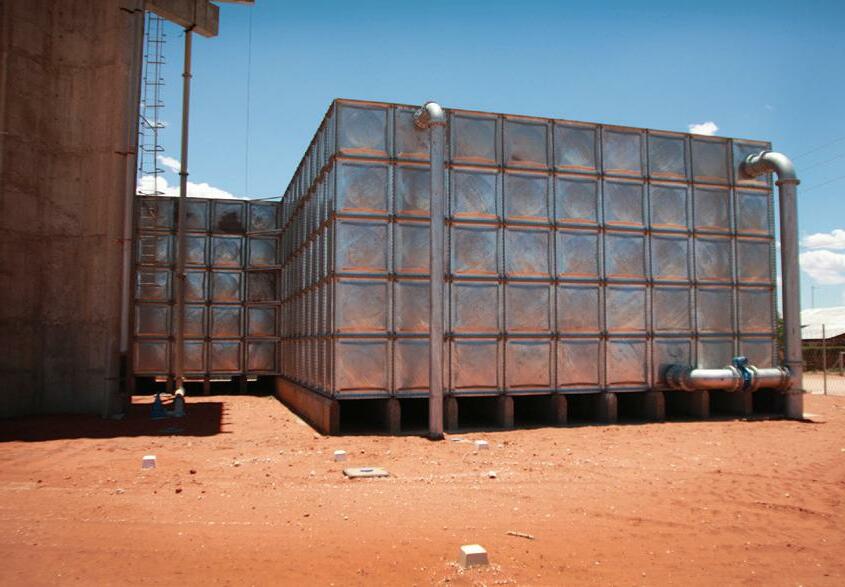








Africa’s wind energy industry is expected to diversify as interest to harness the continent’s wind grows
 Tarfaya wind farm in Morocco
Tarfaya wind farm in Morocco
Outside of a limited number of countries, wind turbines have remained a rare sight in Africa. But this is not for lack of potential. In 2020, a study by the International Finance Corporation (bit.ly/3wozg2g) found that continental Africa possesses an onshore wind potential of almost 180 000 TWh/annum—enough to satisfy the entire continent’s electricity needs 250 times over. As the continent continues to seek ways to expand energy access, the adoption of wind as a source of energy is expected to accelerate.
So far, only Morocco, Egypt and South Africa have been truly successful in harnessing their wind potential and attracting private capital to set up wind parks.
Through its widely acclaimed Renewable Energy Independent Power Producer Procurement (REIPPP) programme (www.ippprojects.co.za), South Africa has already commissioned 34 wind farms with an installed capacity of over 3.3GW, according to the country’s IPP Office.
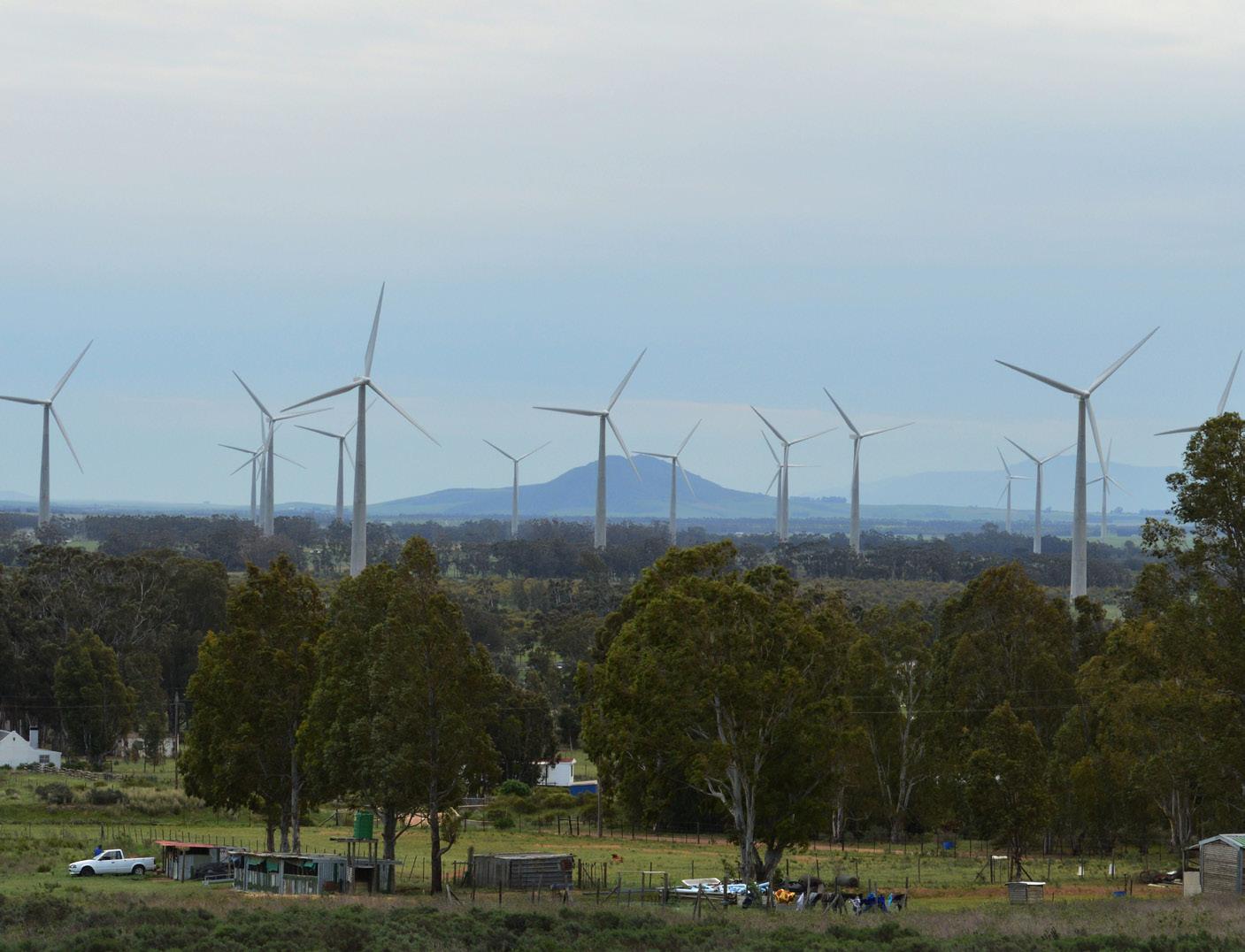
And this is far from over. In 2021, the South African Ministry of Mineral Resources and Energy announced 25 successful bidders under its REIPPP Bid Window 5, including 12 wind farms with a total capacity of 1 600MW (bit.ly/3AGPkyS). Project agreements for these facilities are expected to be signed before the end of 2022. In April this year, the country also opened the REIPPP Bid Window 6 (bit.ly/3Cm2X7N), which will allocate a maximum capacity of 1 600MW of wind, with projects ranging from 50MW to 240MW.
Up north, Morocco and Egypt continue to drive wind energy developments. The latter has an installed wind generation capacity of almost 1.5GW across 13 wind farms, according to its Ministry of Energy. It now expects to commission another 2GW by 2025 with an additional 14 wind farms.
On the other side, Egypt has seen fewer but bigger projects. Its four wind farms have a current installed capacity of 1.6GW. The most recent one, West Bakr, was commissioned by Lekela Power in November 2021.
Across the rest of the continent, multilateral and development finance institutions (DFIs) have played a key role in supporting the emergence of the wind sector.
West Africa has increasingly harnessed its wind potential with facilities commissioned in Cabo Verde (Cabeólica, 2011), Senegal (Taiba Ndiaye, 2019) and Mauritania (Boulenouar, 2020). The projects received significant backing from the likes of the Africa Finance Corporation (AFC), the United States International Development Finance Corporation (DFC), and the Arab Fund for Economic & Social Development.
They have successfully laid the groundwork for more projects to follow. In December 2021, the DFC notably provided funding for a feasibility study (bit.ly/3KhvOfK) to expand Senegal’s 158.7MW Parc Eolien Taiba N’Diaye Wind Farm by another 100MW.
East Africa is also joining the game, led by Kenya. After the expansion of the Ngong facility in 2014, the country commissioned the 310MW Lake Turkana Wind Farm in 2017 and the 100MW Kipeto Wind Farm in 2021. The African Development Bank was the mandated lead arranger on Lake Turkana’s debt package and managed to attract several leading European DFIs to finance the project. On its side, Kipeto was mostly funded by the DFC.
After its success in Cabo Verde, the AFC moved east where it is the lead developer on Djibouti’s Red Sea Wind Power Project in Ghoubet (bwnews.pr/3dPLHxs). The 60MW facility is now nearing completion and is the country’s very first IPP.
More recently, natural resources and extractive industries have provided an additional driver of wind energy adoption in Africa. Publicly listed oil & gas and mining companies seeking to decarbonise their portfolio and cut carbon emissions across their operations are indeed looking at wind.

In March 2022, Savannah Energy executed an agreement with the Ministry of Petroleum, Energy and Renewable Energies of the Republic of Niger (bit.ly/3dQl3Ve) to develop the country’s first wind farm. Savannah Energy, operator of some of the most prolific oil blocks in Niger, is planning to construct and operate the 250MW facility in the Tahoua Region. The wind farm will be structured as an IPP and is currently in feasibility study. It is expected to be sanctioned in 2023 for a potential commissioning in 2025.
In Zambia, First Quantum Minerals entered into a new partnership with Chariot and Total Eren earlier this year (bit.ly/3AaVG8e) to develop 430MW of solar and wind power for its mining operations. The company notably operates Africa’s biggest copper mine by production
in Zambia and seeks to reduce its carbon footprint by 30% by 2025.
In South Africa, Anglo American is embarking on an even bigger project with EDF Renewables. Both companies signed a Memorandum of Understanding (MoU) in March this year (bit.ly/3KgyRo4) to work together on the development of a new regional renewable energy ecosystem. The scheme is expected to be designed to meet Anglo American’s operational electricity requirements in South Africa through the supply of 100% renewable electricity by 2030. It notably seeks to develop a network of on-site and off-site solar and wind farms with storage totalling up to 5GW to power Anglo American’s operations.
Equally important, the emergence of Africa’s hydrogen industry will also be supporting the growth of its wind sector.
Last year, the Chariot Energy Group signed an MoU with the Mauritanian Ministry of Petroleum, Mines & Energy (bit.ly/3CGFPRV) to progress Project Nour, a potential green hydrogen development of up to 10GW. Under the MoU, Project
Nour has been given exclusivity over 14 400 square kilometres of onshore and offshore area in Mauritania where pre-feasibility and feasibility studies will be conducted to generate solar and wind power used in electrolysis to split water and produce green hydrogen and oxygen.
In Namibia, in late 2021, the government issued a notice of award to Hyphen Hydrogen Energy—the joint venture of Nicholas Holdings Limited and ENERTRAG South Africa (Pty) Ltd— to develop southern Africa’s first gigawatt-scale green hydrogen project (bit.ly/3wnyen9). The $9.4-billion scheme will be located within the Tsau //Khaeb National Park, which is among the top five resource-rich locations in the world for co-located onshore wind and solar, according to Hyphen. The project’s full development targets 300 000 metric tonnes of green hydrogen production a year from 5GW of renewable generation capacity and 3GW electrolyser.
Sinclair Vice President of Energy & Director of Government Relations Africa Oil Week & Green Energy Summit Africa
PaulProbe IMT’s leading ladies are making a positive difference in the company and the communities in which it operates
Probe IMT (Integrated Mining Technologies) Group is an innovative company with an array of products that significantly improve both the design and operation of collision avoidance, auto electrical, and integrated solutions for productivity and safety in the mining and construction sector.
The company is proud to have women in management positions, serving with excellence in typically male-dominated sectors. Women like Grace Shana, Pulane Radebe and Daphney Majola are leading the way with aplomb, helping Probe IMT become a top solutions provider in Africa.
Born in Zimbabwe, Grace Shana holds a degree in Banking and Finance, a Senior Development Management Programme from the University of Stellenbosch, and is currently in her final year studying toward an Honours in Business Management with Lincoln University.
She began her finance career in Zimbabwe in 2000 and later moved to South Africa in 2005. She has over 21 years of experience in finance and administration. From 2006 to 2009, Shana took a sabbatical to travel on the Disney Cruise Line USA to gain international experience—one of the most memorable moments of her life.

Currently employed as group financial manager at Probe IMT, Shana heads a team of 20 aspiring finance professionals. Her diversified
environment enables her to prepare mentally for potential challenges, derailment, transitions as well as collaborations. Her core function is to manage financial resources, streamline processes, think strategically, realise potential and model leadership.
Shana’s positive, strategic and effective approach toward her career trajectory—using her strengths, experience, commitment and learning experiences to reach her full potential— has led her to build extraordinary teams who look up to her as a leader paving the path for others to follow.
- Group human resources manager
Pulane Radebe, born in Gauteng, has been in the human resources field for over 15 years. She holds a degree in Human Resources Management, is a qualified OD Education Training Development Practitioner, and has recently completed a course in Advanced Labour Law. She is currently studying toward her Postgraduate Diploma in HR Management.

One of Radebe’s key focuses is safeguarding and promoting the interests of employees in the mining industry in a manner that is best implemented to maintain job satisfaction and business efficiency, including promoting the interests of the Probe Mining Group of Companies and the communities within which the organisation operates.
Her resoluteness in unlocking the potential of individuals through learning and optimising their performance affirms her belief that “knowledge is power”. She lives by the motto, “Success is not how high you have climbed, but how you make a positive difference to the world” (Roy T. Bennett).
- Site manager at PPM Rustenburg
Daphney Majola was born in Motlhabe (Moruleng) and studied Mining Safety at TR Consultant Chamber of Mines, later joining Probe IMT in 2019 at its Rustenburg branch.

She initially began her tenure as a spotter, tally clerk and environment safety rep, and was promoted to become the first female safety officer at PPM. Today she is the first female site manager for Probe IMT at the Pilanesberg Platinum Mine—and an inspiration to many.

Majola’s passion for her people saw her become a role model within her community. Her role at Probe IMT may be deemed challenging for most women; however, her perseverance harbours a mindset that women in mining are a formidable force, and they can take on even the most herculean of roles.

She specialises in the installation and maintaining of collision avoidance systems in heavy- and light-duty vehicles. She is au fait with safety management principles, task observation, emergency preparedness, programme evaluation, security philosophy, risk management, ergonomics, planned inspections, explosives safety, and auditing skills.
Majola aspires to see herself as a shareholder, motivating African women to reach their potential as leaders. Her message to women in the South African business community is to continue learning, become independent, and to grow their organisation with strength and a constructive mindset.
For more information about Probe IMT Group, visit www.imtmining.co.za

Powerful X-rays reveal the birth of giant rare earth element deposits—and may give clues for sustainable mining

Researchers were able to recreate and study something like the conditions that reigned during ore formation

More than 10 years ago, the so-called ‘rare earth crisis’ (bit.ly/3AG5bh5) highlighted the fragility of the supply chain of these metals that are crucial for the transition to a carbon-neutral economy (bit.ly/3QL66Cq). Most of the world’s supply of these minerals comes from a handful of giant ore deposits, but we still know little about how these deposits formed.
Despite the name, the rare earths are relatively widespread in the Earth’s crust, compared with elements such as gold and platinum. Large, concentrated deposits suitable for mining, however, are much more scarce.
To understand how these deposits form, we recreated the hellish temperatures, pressures and chemical environments that occur kilometres below the Earth’s surface, and used intense X-rays to probe the behaviour of rare earth elements down to the molecular level.
We discovered a previously unknown process (go.nature. com/3PDXcW1) whereby rare earth elements can bind to a common chemical called carbonate in hot fluids at high pressure. This provides hints about how rare earth deposits form, and also about how we can reverseengineer the process to extract these rare metals in a more sustainable way.
The rare earth elements (bit.ly/2P7uLRK) are a group of 15 soft, silvery heavy metals found at the bottom of the periodic table (from lanthanum to lutetium). Two more elements (scandium and yttrium) are also often included in the group, because of similarities in their chemical behaviour.
Today’s giant deposits of rare earth elements are associated with unusual types of molten rock called carbonatite and alkaline magmas. These magmas do not contain much silicon (the secondmost abundant element in the Earth’s crust after oxygen), but instead include a lot of alkali metals (sodium and potassium), calcium and volatile elements such as carbon, fluorine or phosphorus.
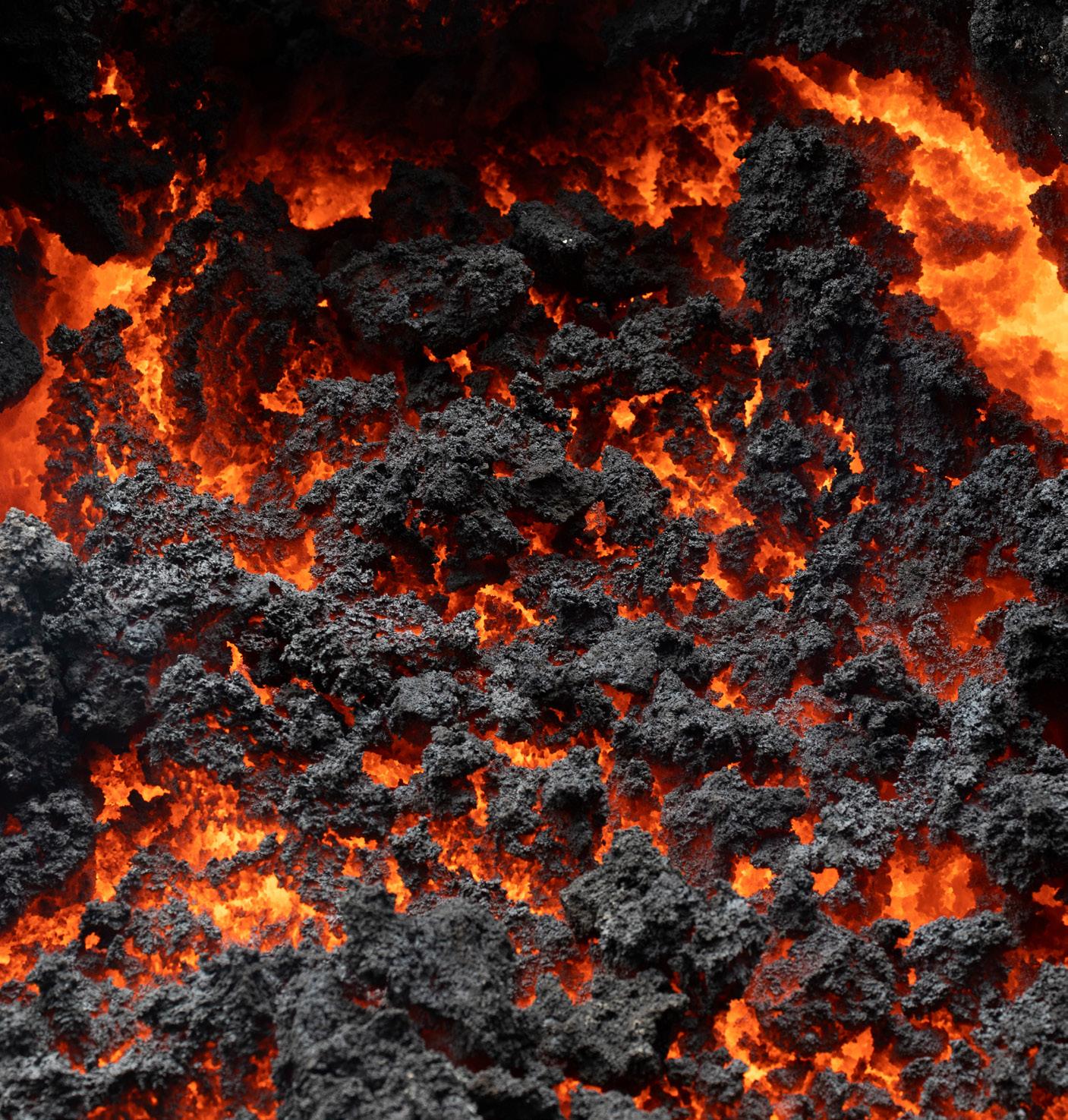

All rocks around us contain significant amounts of rare earth elements, but they become concentrated in these exotic magmas through slow crystallisation in the Earth’s crust. This is usually not enough to make an ore deposit, which consists of millions of tonnes of rock made up of between 5% and 50% by weight of rare earth elements. A second step of concentration is required.
In giant deposits such as Bayan Obo in Inner Mongolia, hot fluids loaded with carbonate appear to have undergone this extra concentration step. But exactly how has been a mystery.
We think rare earth ores formed kilometres below the Earth’s surface. Millions of years ago, high temperatures (200O C–800O C) and pressures (hundreds to thousands of times greater than atmospheric pressure) transformed pre-existing concentrations of rare earth elements into valuable ores.
There is no way for geologists to go and watch ore forming, but we tried to do the next best thing.
We were able to recreate and study something like the conditions that reigned during ore formation, using the French Absorption Spectroscopy Beamline at the European Synchrotron Radiation Facility (ESRF) in Grenoble, France.
All rocks around us contain significant amounts of rare earth elements, but they become concentrated in these exotic magmas through slow crystallisation in the Earth’s crust.


 Dr Tanaka Mugabe
SAIMI Project Manager
Dr Tanaka Mugabe
SAIMI Project Manager
We used a specially designed autoclave (a geological cooking pot) to create temperatures up to 600O C and pressures up to 200 megapascals, which corresponds to depths of about seven kilometres in the Earth’s crust.
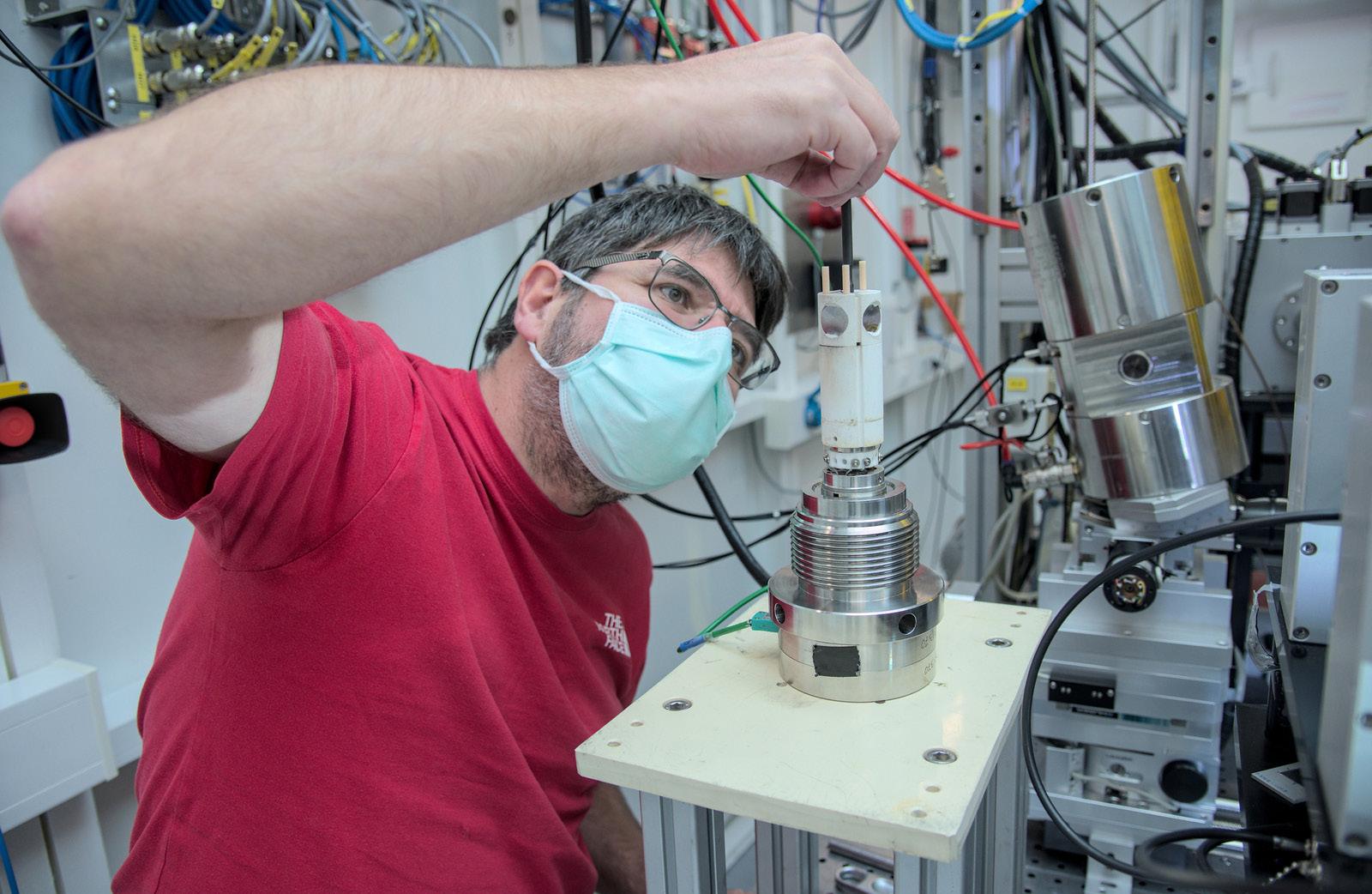
At the ESRF synchrotron, which is effectively a giant X-ray gun 100 billion times more powerful than a hospital X-ray device, we can probe the composition and molecular structure of fluids and dissolved materials inside the cooking pot. A safe ticket to Hades provided by X-ray vision!
Specifically, we probed how rare earth elements bonded with chlorine, fluorine, hydroxide or carbonate present in fluids at high pressures and temperatures. Reactions between the rare earth elements and these so-called ‘ligands’ are responsible for the solubility of rare earth minerals.
The results were unexpected. First, we discovered that fluids
rich in carbonate can carry large amounts of rare earth elements. Second, adding fluorine had little effect on the fluids’ ability to carry rare earth elements.
This means hot carbonaterich fluids could transport rare earth elements and fluorine together—so common ore minerals such as bastnaesite (which is made of rare earth elements, carbonate and fluorine) could precipitate out of the fluid when it cools.
Our experiments also show that carbonate-rich fluids will concentrate more light rare earths (such as lanthanum) or heavy ones (such as gadolinium and ytterbium) at different temperatures. This is important for determining the economic value of ores, as some rare earth elements are more expensive than others.
Most importantly, the economic and environmental costs of rare earth element mining are strongly affected by the difficulty of separating the different
elements. Many ores also contain radioactive elements such as uranium and thorium, which need to be dealt with.
Our results reveal a new avenue for rare earth element processing: using environmentally benign carbonate solutions to leach rare earth elements from ore at high temperatures.
In this way, we may be able to reverse-engineer the ore-forming process to extract the metals needed to sustain the world’s transition to a carbon-neutral economy.
Joël Brugger Professor: Synchrotron Geosciences Monash University
Barbara Etschmann Research Officer Monash University
Marion Louvel
Earth Science Researcher Centre National de la Recherche Scientifique
Hennox Supplies product lines create the safety and welding culture solutions any company requires. Pioneering safety and welding has been at the forefront of its offerings, whether it be in the mining, construction or engineering sector.
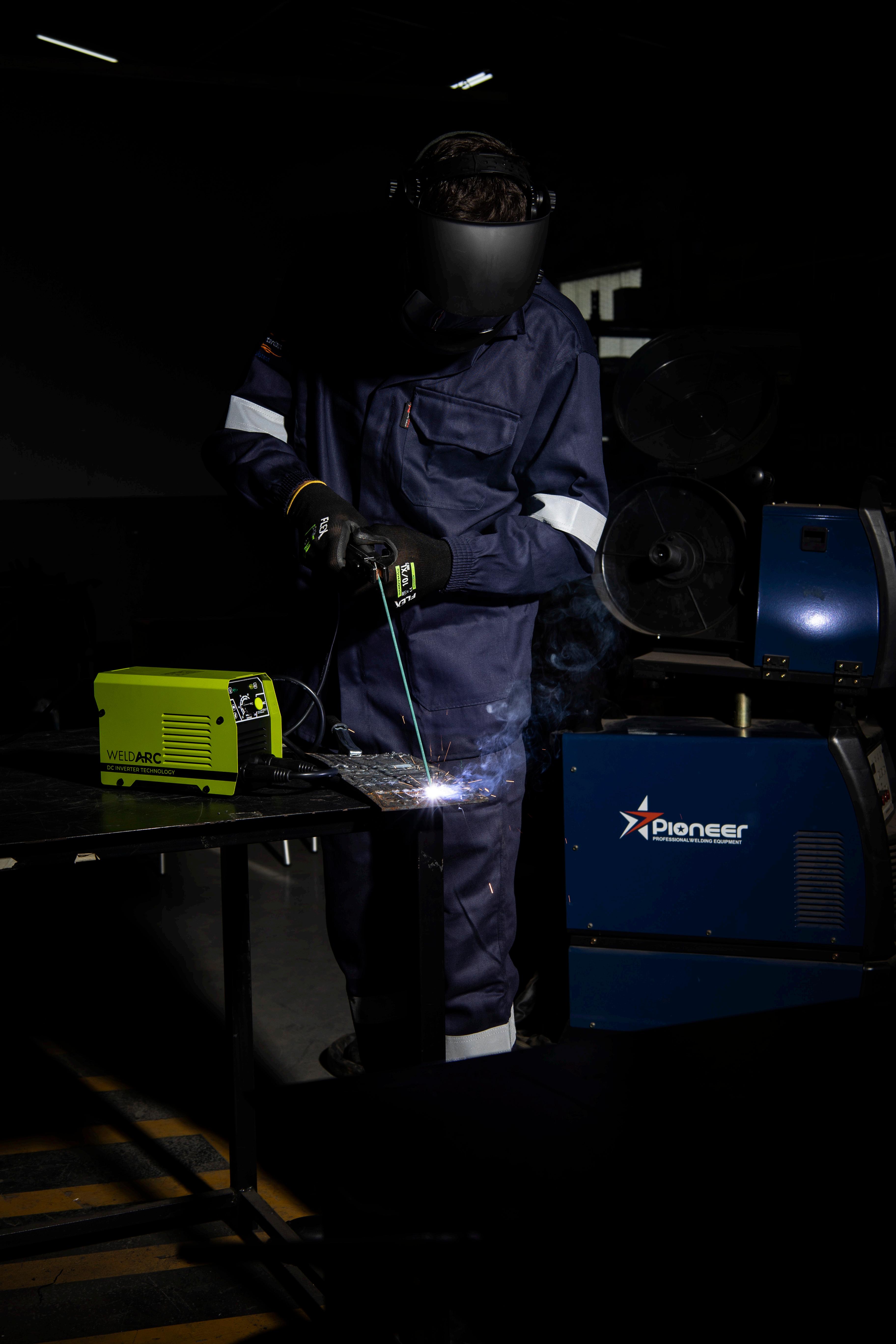

The South African mining industry has made inroads into key health and safety challenges, but there is still a long way to go to achieve zero harm

There is much work to be done on the mining health and safety front in collaboration with the Department of Mineral Resources and Energy (DMRE) and organised labour, said the Minerals Council South Africa in August on the National Day of Health and Safety in Mining 2022, with the theme: “Stepping up to the Challenge”.
There have been historic firsts on the safety front, with no fatalities caused by falls of ground at South Africa’s underground gold and platinum mines in the first seven months of the year, while there have been no deaths associated with trackless mobile machinery across the industry in the first six months of the year.
The Minerals Council’s CEO Zero Harm Leadership Forum has agreed to a six-pillar Fall of Ground
Action Plan in conjunction with professional mining associations for its members to implement to address these incidents. The Action Plan, approved in July 2021, includes a financial investment of R46 million over five years.
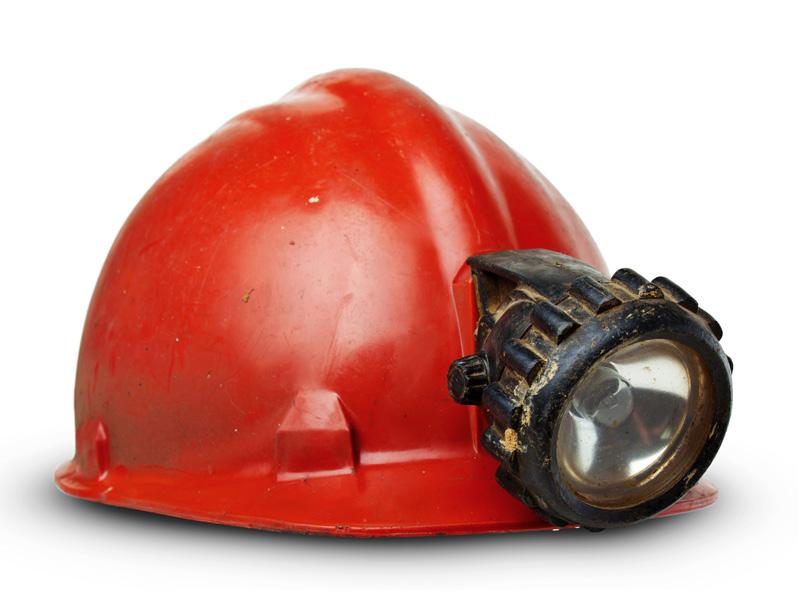
The Minerals Council introduced a special project in 2017 focusing on industry alignment on the development of collision prevention systems technologies, resulting in a reduction of trackless mobile machinery fatalities.
These two aspects of mining have traditionally been a large source of fatalities in South Africa and have come under intense focus by the Minerals Council, its 78 members, the DMRE and unions.
On the National Day of Health and Safety in Mining 2022, Minerals Council leadership—represented by its president Nolitha Fakude,
CEO Roger Baxter, and chair of the CEO Zero Harm Leadership Forum Themba Mkhwanazi—outlined the areas of progress and flagged challenges in achieving zero harm in the mining industry.
“On behalf of the industry, I would like to thank our regulator and our colleagues in labour in assisting to turn around this health and safety ship. It is heartening that when it comes to safety and health, we work together because we are aware of our common goals,” said Fakude.


Elite Property Insurance - your property equals your success. Protect it, and you will ensure a secure and prosperous tomorrow.
Elite Bespoke Motor Insurance - impeccable performance, absolute reliability and the ultimate in convenience.


The mining industry has reported 25 fatalities in the year to date compared to 29 in the same period a year earlier—a 14% reduction. While the trend is encouraging, Mkhwanazi said the number was unacceptable and there was a long way to go to achieve the target of zero harm.
On the health front, there was a 35.7% decrease in reported occupational health diseases to 2 013 in 2020 from 3 130 in 2019. The incidence of diseases declined across all categories, with the biggest decline seen in coal workers’ pneumoconiosis and pulmonary tuberculosis. The industry had a 44.6% decline in cases of TB to 849 in 2020 from 1 533 in 2019.
The 2024 Milestone target of no pieces of equipment emitting noise more than 107 decibels suggests the Minerals Council member companies are on track to achieve the Milestone. The industry has run noise workshops, with the aim of improving the quality of noise measurements and the reporting of the results.
Apart from the direct interventions into leading causes of fatalities and injuries, the Minerals Council is prioritising a
shift from a ‘blame culture’ to a ‘just culture’ for 2022. A blame culture is counterproductive and it increases safety risks, as people who make mistakes or notice problems may conceal them and blame others when an incident happens. “A ‘just culture’ encourages learning. It does not eliminate accountability. It is, though, a critical change in a more than 100-year-old mining culture,” said Mkhwanazi.
The mining industry will accelerate safety interventions and initiatives through an Independent Peer Review of Incident Investigation and Analysis System, which is a project originating from the Minerals Council’s 2019 Khumbul’ekhaya safety initiative launch. The intention is to share experiences and learnings from safety incidents to avoid repetitions.
All delegates highlighted the successes arising from cooperation and collaboration between the key stakeholders in addressing health and safety, with notable improvements in reducing fatalities stemming from falls of ground and trackless mobile machinery incidents.
The Minerals Council Board held a special meeting in December to agree and urgently implement eight interventions to halt two years of regression in safety performance in the mining industry and then reverse the trend. In 2020 and 2021, the industry reported 60 and 74 fatalities respectively, compared to the all-time low of 51 in 2019.
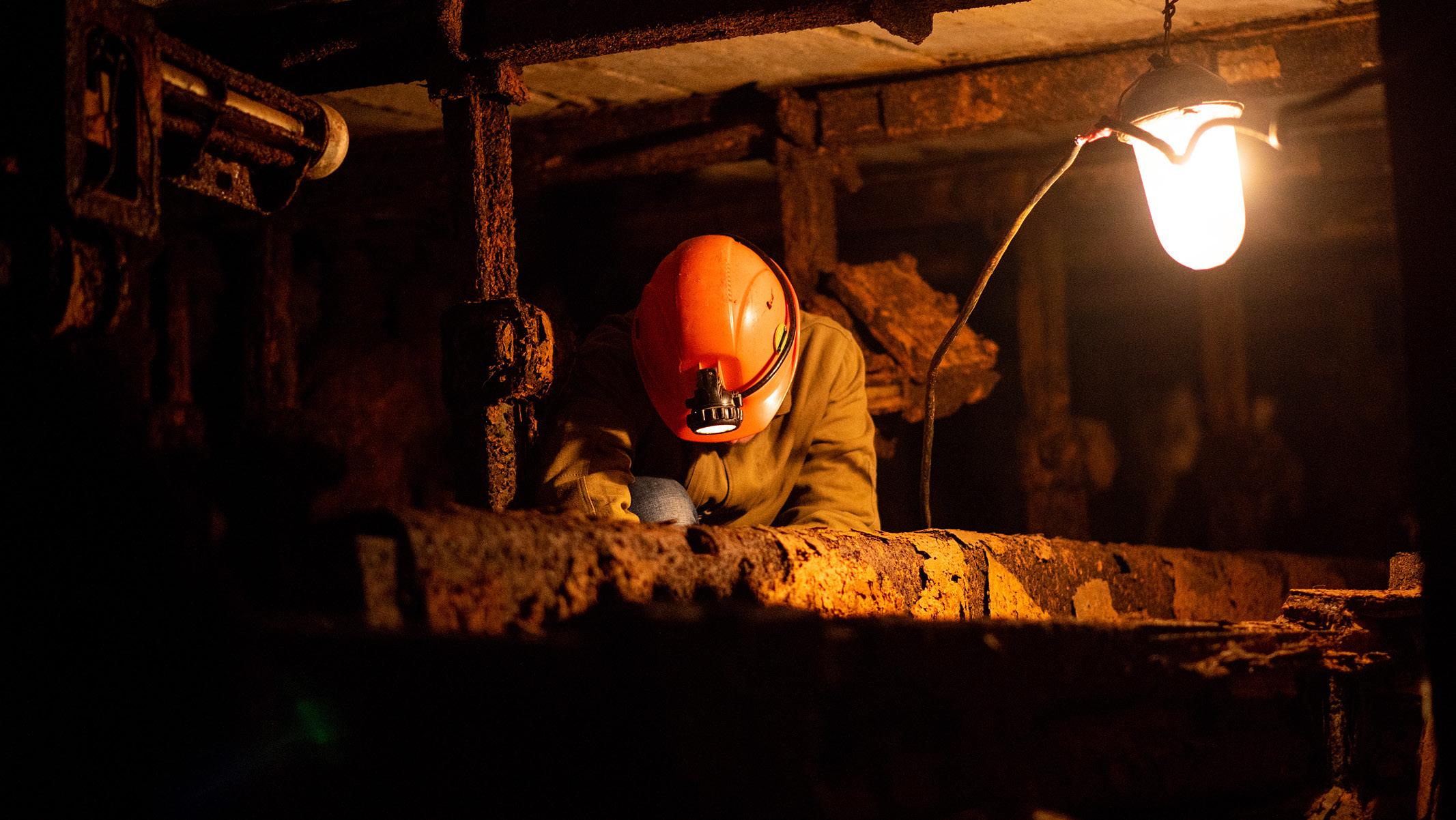
The achievements in combating the COVID-19 pandemic since early 2020 in the mining industry—with a successful return to work and programme that has ensured more than three-quarters of the 460 000-strong workforce have received vaccinations compared to 45% nationally—was an example of how collaboration between the government, organised labour and industry had made a positive difference, said Baxter.
The mining industry lost 750 colleagues to COVID-19, with a fatality rate of 1.18% compared to 2.6% nationally.
Allan Seccombe Head: Communications Minerals Council South AfricaRush Exhaust Purification has been in existence since 2005, Specializing in designing and manufacturing of Emission Control Exhaust Systems, as to customers specification on underground mining equipment.
Rush Exhaust Purification has been in existence since 2005, Specializing in designing and manufacturing of Emission Control Exhaust Systems, as to customers specification on underground mining equipment.
Using the latest technology available on the market for Ceramic Diesel Particulate Filter (DPF), Metal DPF and Catalytic Converters
Using the latest technology available on the market for Ceramic Diesel Particulate Filter (DPF), Metal DPF and Catalytic Converters



One of the Major advantages of the new systems is that the Ceramic DPF, and Metal DPF are easily interchangeable with each other, and no modification needed
One of the Major advantages of the new systems is that the Ceramic DPF, and Metal DPF are easily interchangeable with each other, and no modification needed


Rush Exhaust Purification’s DPF Filters and Catalytic converters is most affordable, runs at the l owest cost per kilowatt per hour, and robust pattern design for the harsh South African Mining Conditions

Rush Exhaust Purification’s DPF Filters and Catalytic converters is most affordable, runs at the l owest cost per kilowatt per hour, and robust pattern design for the harsh South African Mining Conditions Tel: 011 660

Rushsp-ent.co.za




With the change of the season as we roll into spring comes another milestone celebration within Strata Mining Services as they celebrate their second birthday in September as a standalone company.
In the competitive mine equipment game, Strata provides unique services which include pit-to-port mining solutions in the opencast mining industry. Well-trained operators are often what sets Strata apart from other companies as they believe in providing skilled people to operate their equipment and to provide excellent efficiencies and productivity.
It has been two years of navigating challenges since the rebirth of the company happened during the Covid-19 pandemic in 2020, but management and the steadfast team remained committed to the success of the company, especially since the business was permitted to continue operating as an essential service during this time.
The company’s B-BBEE status remains 51% Black Owned with the inclusion of Black Woman Voting Rights.
Strata’s adept ability to morph into new and changing circumstances has been the secret to their success in their short but effective two years.
Their dedicated and enthusiastic team remain true to its values and virtues, which MD Chrisna Basson believes has been a significant contribution to the company’s success and ability to adapt thus far.

“People are our priority, from our customers to our executives and all our staff,” said Chrisna. “We have a solid team and the invaluable relationships we hold and maintain with our people is our central focus, where we’ve earned trust and respect for one another. The fundamentals of remaining humble, the urgency to deliver a top-class solution and the hunger to get things done while respecting those around us have brought us to where we are, and I am exceptionally proud of my team.”
Among Strata’s unique services are basic mine rehabilitation, stockpile management, opencast mining solutions and mine load and haul solutions.

The most recent change to the company is at senior level with a shuffle in the Board – empowerment partner Paulos Ngcobo retains his capacity as Director and majority shareholder and is joined by new board member and shareholder Linda Ngcobo who is formally welcomed by Chrisna Basson, Managing Director. STRATA MINING SERVICES (PTY) LTD
Chrisna@stratams.co.za
“Our business is growing and we’re available to be of service to you for your mining and pit-to-port solutions for many years to come.”
Chrisna Basson , Strata Mining Services MD



South Africa’s abandoned coal mines risk both safety and human rights
Across the country, only 27 mines (all mining asbestos) of the 2 322 classified as ‘high-risk’, including coal mines, have been cleaned up since 2009

The South African government’s failure to ensure abandoned coal mines are rehabilitated puts communities at risk of injury and death, and risks polluting residents’ water sources, states Human Rights Watch in a report released in July this year.

The 45-page report, “The Forever Mines: Perpetual Rights Risks from Unrehabilitated Coal Mines in Mpumalanga, South Africa” (bit.ly/3ceJdZf), documents the threats to communities from coal mines in Mpumalanga province which have not been properly cleaned up. Human Rights Watch found that the government has failed to make progress on addressing the dangers of abandoned coal mines—and that the industry, through its inaction, has created ongoing problems that affect communities’ safety and health.
“South Africa’s government has done almost nothing
to address the toxic legacy that coal mining has on communities living near abandoned mines,” says Vuyisile Ncube, the 2020–2021 Alan R. and Barbara D. Finberg Fellow in the Environment and Human Rights Division at Human Rights Watch. “The government should ensure mining companies that profited from years of mining coal do not avoid their responsibilities to clean up the toxic mess they have left behind.”
Human Rights Watch interviewed 34 community members, artisanal miners, health workers, members of civil society, and local government officials and analysed documents and data from the South African government, nongovernmental organisations and academic sources.
Across the country, only 27 mines (all mining asbestos) of the 2 322 classified as ‘high-risk’, including coal mines, have been
cleaned up since 2009, reported South Africa’s auditor-general in 2021.
Abandoned coal mines often leach highly acidic water that can pollute water sources, and unsecured mines pose an ongoing risk of accidents. Relatives of two 14- and 17-year-old boys who drowned in an abandoned mine shaft described to Human Rights Watch how easily accessible open mine pits and shafts fill with water, putting people at risk of injury or death from accidents.
Unrehabilitated mines risk polluting water of millions of South Africans, as mine waste left exposed to the elements can dramatically increase the acidity of water and soil in many parts of South Africa. Known as acid mine drainage, it can leave water unusable and the soil unproductive, and corrode municipal infrastructure used for water delivery.
Almost 10 years after a 2012 High Court decision directed various levels of government to address the acid mine drainage crisis in the town of Carolina, Mpumalanga (bit.ly/3R4SLF6), residents who spoke to Human Rights Watch in 2021 indicated that little had changed. Residents described upset stomachs and other health problems that they believe are due to contaminated water.
“The ongoing water crisis in Carolina underscores both the potential impacts of unchecked acid mine drainage but also the lack of government attention to these issues,” says Ncube. “Even when the government was directed by the court to address poor water quality, it hasn’t done so. South Africa’s communities deserve better.”
Improper assessments of future cleanup costs by the Department of Mineral Resources and Energy combined with a systemic lack of enforcement has left residents of communities—not coal companies—bearing the cost of rehabilitation after coal extraction.
Costs of proper mine rehabilitation are usually significant, sometimes tens of millions of US dollars, particularly in locations where acid mine drainage is a risk, as in Mpumalanga. Cleanups would typically occur after mining companies have exhausted almost all the easily extracted ore, leaving little financial incentive to incur what companies would consider an additional cost, especially because laws requiring cleanups are rarely, if ever, enforced in South Africa.
Mpumalanga residents said they had received no information from the local, provincial or national governments about the risks unrehabilitated mines pose, and basic information such as water quality data or abandoned mine locations that would give civil society and others a foundation for understanding the risk is not
available from the government or is incomplete.
Human Rights Watch filed four access-to-information requests seeking information on unrehabilitated mines, none of which came back within the legislated time of 30 days.
The tens of thousands of zama zamas (artisanal miners) who mine in waste rock or at abandoned mines are at particular risk. Some zama zamas described to Human Rights Watch the tunnel collapses, suffocation and other accidents that befell many of their colleagues. An analysis of South African Englishlanguage media coverage between 2012 and 2015 found reports of 312 deaths of zama zamas. At least 150 reportedly died because of collapsed tunnels, gas poisoning, suffocation and explosives accidents. The rehabilitation of mines could provide sustainable employment for many of these workers without the risks that artisanal mining entails, says Human Rights Watch.
Globally, coal is one of the highest emitting and most widely used fossil fuels in the world today; it is also the most polluting. Coal emissions can lead to significant health
consequences for communities near mines or power plants as a result of polluted air, water and soil. To limit the impacts of the climate crisis, countries need to urgently transition from fossil fuels to clean energy. But as part of that transition, it is vital to clean up coal mines and other fossil fuel infrastructure properly to limit ongoing risks to the rights of residents, urges Human Rights Watch.
South Africa’s government should ensure companies provide adequate financial security for the full cost of coal mine rehabilitation, that those funds are used to clean up mine sites after mining stops, and that companies that fail to do so are held to account.

“There are hundreds of unrehabilitated coal mines among the over 6 000 mines in South Africa that need to be cleaned up,” Ncube says. “The government has a responsibility to ensure communities don’t suffer from these ‘forever mines’. It should take urgent steps to ensure adequate rehabilitation of the land by mining companies.”
Human Rights Watch www.hrw.org
A woman digs for coal at an abandoned mine in WesseltonSekta is an industrial services force that reflects the maturity of our society and a genuine understanding of the pivotal role we play in it. We provide services to the energy, petrochemical, oil and gas, mining, construction, food and beverage sectors. Our services support an industrious nation and the African continent, so that we can continue to develop in prosperity and pride.

www.sekta.co.za info@sekta.co.za

Sekta is a specialised industrial services group. B-BBEE Level 151% black women owned







Xcalibur Multiphysics is a world leader in airborne and marine geophysical solutions, including value-adding data acquisition, data proces- sing, data interpretation, data management, and specialized software. We offer natural resource mapping (Oil & Gas, mining, underground water and geothermal) to, sustainably, unlock the hidden wealth of the Earth and facilitate the decision-making processes of our clients. Serving mainly the mining, Oil & Gas, government, energy, and utility markets, Xcalibur’s global client portfolio ranges between public and private sectors, including Major and Junior companies and organizations.
Xcalibur’s geophysical service offer covers the full range of technologies in Airborne Geophysics (Magnetics and Radiometrics, Gravity Gradiometry Falcon, Electromagnetics, Gravity), Marine (Gravity and Magnetics), and Geographic Information Systems (GIS), holding a total of 24 patents. Xcalibur is currently a world leader in MagRad technology services, the only provider of FALCON Gravimetry, the only provider of helicopter-based FALCON Gravimetric Gradient, and pioneers in geothermal mapping projects, having executed the first project 10 years ago. Throughout its over 100 years of experience, Xcalibur Multiphysics has established more than 50 million linear kilometres of collected data. With more than 1000 projects executed in 6 continents, a fleet of 23 owned specialized aircraft, 85 geophysical systems, and a team of 200 highly qualified employees, Xcalibur continues to execute projects with safety, sustainability, technological innovation, operational excellence, and cost efficiency at the centre of its core values.
Distributed in 12 office locations worldwide, with headquarters in Spain, a multidisciplinary management team leads an experienced group of geophysicists, geologists, pilots, engineers, operational, commercial, and administrative staff.
Xcalibur is committed to optimizing the sustainable discovery and development of natural resources while operating safely, responsibly, and with integrity. Health, Safety, and Environment principles are integrated into our risk management, business planning, and processes. Our passion for innovation combined with our culture of continual improvement in HSE increases our competitive advantage. Click here to find out more about our HSE policy.
In Xcalibur, we are committed to the world and the people around us. As part of our Corporate Social Responsibility program, in August 2021, Xcalibur Multiphysics founded the Xcalibur Foundation (Fundación Xcalibur), a non-profit
In Xcalibur, we are committed to the world and the people around us. As part of our Corporate Social Responsibility program, in August 2021, Xcalibur Multiphysics founded the Xcalibur Foundation (Fundación Xcalibur), a non-profit organization set up in Spain to develop social and cooperation projects in countries where Xcalibur Multiphysics is present. Collaborating with local authorities, and local and global partners and foundations, its mission is to boost lifelong education and training of vulnerable children, youth, and women, using sport as a pedagogical and motivational tool.
· Airborne Magnetics and Radiometrics (MagRad) · Airborne magnetic surveys are a quick and cost-effective method of measuring the variations in the strength of the Earth’s magnetic field. Airborne radiometric surveys measure the gamma-ray radiation of the n ear-surface superficial geology and are often flown in combination with airborne magnetic surveys.
· Airborne Gravity Gradiometry · (AGG) FALCON AGG technology is specifically designed to measure the gravity field with high accuracy and very high spatial resolution in a dynamic airborne environment.
· Airborne Electromagnetics (AEM) · AEM surveys are extensively used to image the conductivity of the earth in 3D to assist with a wide range of applications from the ground to several hundred meters below the surface.

· Conventional Airborne Gravity (AG) · Airborne Gravity surveys are used either stand-alone or in combination with other technologies to map the variations of the rock densities and also identify the location and size of major structures.
· Marine Gravity and Magnetics (GravMag) · Marine Gravity and Magnetic data are acquired in combination with seismic surveys for Oil & Gas exploration from regional scale basin-wide to targeted prospect scale studies.
· Value-added Software and Other Services · Our vast experience is applied to routine data processing as well as value-added data management and interpretation services




The more laborious the task, the greater the need to pay attention to health care.
Mining in South Africa is still very labour intensive and strenuous. Healthcare should be at the top of your agenda to improve productivity. A healthy, happy workforce leads to a healthy bottom line and that WIN-WIN is the goal for HealthCare providers in the mining industry.

Phakamisa Healthy Living is one such partner that has achieved this balance for mines for the last two decades. In 2002 a group of medical doctors developed costeffective South African high-quality multivitamins for the mining industry. The brand is well known in many mines across the country. Today, they are also in all the leading pharmacies and outlets across the country. Their proven approach of a healthy breakfast to kick start the day and daily multivitamins have made them extremely popular for many years now.
South Africa’s mining industry still relies heavily on hard physical labour. Some of the environments mining employees are exposed to can be very harsh and physically demanding. We know that South Africa is home to some of the world’s deepest underground mines, and the environment is hot and humid. The conditions are physically demanding and the fatigue compromises one’s immune system. This is where Phakamisa stepped in, and when they did, mines saw a marked improvement in mine workers’ health.
A handbook on occupational health practice in the South African mining industry, published by the Safety in Mines Research Advisory Committee (SIMRAC), states that for mine employees, maintaining ‘optimum performance and
sustained productivity is a daily challenge in which both physical and mental recovery must be compressed into the time available between consecutive shifts’. In a COVID environment, optimum health is even more important.
smart to boost the immune systems of all employees.
At a cost of less than R20 per worker per month for quality multivitamin and mineral tablets – it’s a clear WIN-WIN for the mine. Throw in breakfast and mid shift meals for good measure and your investment in your employees is not only great for all workers but also for your bottom line. Talk to the team at Phakamisa to get your trial of the WIN-WIN program up and running.
One thing the recent pandemic has taught us all is that there is a direct correlation between health matters, productivity and economic growth.
The more laborious the task, the greater the need to pay attention to healthcare. With mining in South Africa still being very labour intensive and strenuous, healthcare should be prioritised to improve productivity. A healthy, happy workforce leads to a healthy bottom line and that win-win is the goal for healthcare providers in the mining industry. Phakamisa Healthy Living is one such partner that has achieved this balance for mines over the last two decades.
In 2002, a group of medical doctors developed costeffective, high-quality, South African multivitamins for the mining industry. The brand is well known in many mines across the country. Today, these multivitamins are also in all the leading pharmacies and outlets across the country. The proven approach of a healthy breakfast to kick-start the day and daily multivitamins has made them extremely popular for many years now.
South Africa is home to some of the world’s deepest underground mines, with hot and humid environments. The conditions are physically demanding and fatigue compromises individuals’ immune system. This is where Phakamisa saw a gap and stepped in. When they did, mines saw a marked improvement in workers’ health.



At the heart of the Phakamisa Healthy Living solution is specific high-grade nutritional products that assist mine employees in maintaining their energy levels. The energy-rich meals are ready to consume, tasty and easy to prepare. Mineworkers have given their input and feedback on the product’s performance and taste. Although Phakamisa’s range of high-quality nutritional products is manufactured specifically for the mining industry, many across industries have demanded the same great-tasting and nutritious meals. They can be found in many retail outlets. The full range of products includes multi-vitamins, mineral tablets and mid-shift meals. A report titled Nutrition and occupational health and safety in the South African mining industry found that midshift snacks are beneficial as they increase productivity and reduce loss in production.
director, Phakamisa, the company’s nutritional products are cost-efficient and have ample nutrients that boost the immune system and increase productivity. He highlights that a workforce with a strong immune system is less likely to be absent from work due to viral diseases such as flu. Now more than ever, it is strategically smart to boost the immune systems of all employees.
At a cost of less than R20 per worker per month for quality multivitamin and mineral tablets, it’s a clear win-win for the mine. Throw in breakfast and shift meals for good measure, and this investment in employees is not only great for all workers but also for the company bottom line.
TRY IT!
For your mine’s trial offer of Phakamisa multivitamins, minerals and meals, contact Carel Nel at +27 (0)83 342 4146 or carel@phakamisara.co.za.
Going the extra mile In addition to supplying nutritional products, Phakamisa is growing its involvement in mining communities. The company is establishing a wellness centre in Rustenburg. Sullivan says, “The wellness centre’s main aim is to offer basic medical services and equip mine employees, their families and the community with the necessary knowledge to lead an even healthier lifestyle.” Phakamisa also addresses other community challenges such as hunger and malnutrition and has donated to NGOs including the current disaster relief programme in KwaZulu-Natal.
In addition to supplying nutritional products, Phakamisa is growing its involvement in mining communities. The company is establishing a wellness centre in Rustenburg. Frank says, “ The wellness centre’s main aim is to offer basic medical services and equip mine employees, their families, and the community with the necessary knowledge to lead an even healthier lifestyle.” Phakamisa also addresses other community challenges such as hunger and malnutrition and has donated to NGOs’ including the current disaster relief program in KZN.
Phakamisa products boost the immune system of mine employees working in physically demanding environments
At the heart of the Phakamisa Healthy Living solution are specific high-grade nutritional products that assist mine employees in maintaining their energy levels. These energy-rich meals are ready to consume, tasty and easy to prepare. Mineworkers have given their input and feedback on the products’ performance and taste. Although Phakamisa’s range of high-quality nutritional products is manufactured specifically for the mining industry, companies from various other industries have demanded the same great-tasting and nutritious meals. They can be found in many retail outlets. The full range of products includes multivitamins, mineral tablets and mid-shift meals.
For the last two decades, Phakamisa products have been tried and tested in the mining industry and the results speak for themselves.
According to Frank Sullivan, Phakamisa director, the company’s nutritional products are cost-efficient and have ample nutrients that boost the immune system and increase productivity. He highlights that a workforce with a strong immune system is less likely to be absent from work due to viral diseases such as flu. Now more than ever, it is strategically
For the last two decades, Phakamisa products have been tried and tested in the mining industry and the results speak for themselves. According to Frank Sullivan,

One thing the recent pandemic has taught us all is that there is a direct correlation between health matters, productivity and economic growth.


























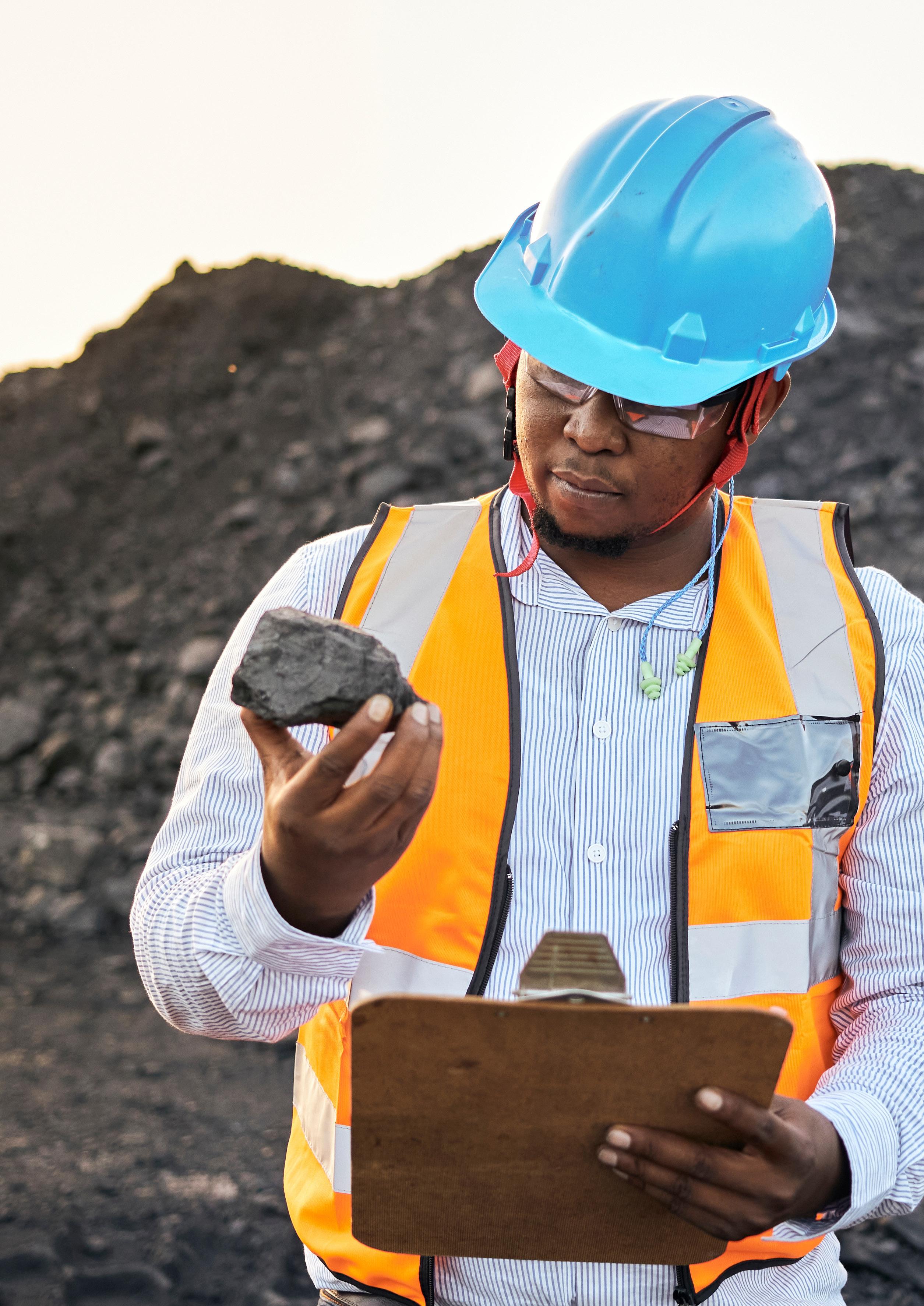
Unearthing the true value of human capital in the mining sector
Instead

of the Great Resignation, companies can create the Great Education.
The mining sector is defined by its ability to adapt and evolve alongside changing global, economic and political conditions, and to refine its approaches based on trends, as well as customer and stakeholder expectations. A behemoth, it still has the ability to pivot.

Today, as the sector steps out from behind the complexities introduced by 2020, it is facing new challenges that have to be overcome to ensure its longevity and sustainable success. One of the most prevalent is skills and expertise.
The search for talent, and the battle to retain it, has been defined as one of the biggest risks for 2022 and beyond in the “2022 and 2031 Executive Perspectives on Top Risks” survey by Protiviti (bit.ly/2uADT9J). Finding top C-suite talent has always been a challenge, but post-pandemic it has become increasingly difficult to find people who have the talent that the industry requires. The global Allianz Risk Barometer 2022 found that the skills shortage sat in the top 10 risks facing South Africa right now (bit.ly/3DH2Cx9), and that economic recovery relies on addressing this issue as effectively and rapidly as possible.
These skills are not just C-level. They are the practical skills, the artisans, the talented employees who are the lifeblood of the sector. The mining sector is not so much at a crossroads than sitting at the top of a roller coaster that’s ready to drop—it needs to invest into skills development that is connected to the communities, that upskills existing employees, that directs training at the unemployed in the areas in which mines operate, and into platforms that are accessible and relevant.
There is little doubt that implementing training programmes is invaluable, but it is important to
recognise that training and skills development have to be managed intelligently and offer employees more than a mandatory tick box or perfunctory learning curve. A recent article in Harvard Business Review (bit.ly/3qZjho6) underscored the risks of a poorly managed and designed training platform within the business, highlighting how many employees are not that engaged with the training on offer, with many finding it interruptive and frustrating. This is echoed by a Forrester report (bit.ly/3qYBz9i) that reveals how a staggering 40% of employees and managers are not enamoured with their on-the-job training.
“Transformational leadership isn’t the exclusive remit of the C-suite or the managers,” says Mike Hanly, managing director of New Leaf Technologies (newleaftech.co.za). “It is felt in the intrapreneur: the employee who has been empowered to innovate within their role and
to explore new ways of working with confidence. It is felt in the resilience of employees who are committed to the company and interested in how its growth will impact their own. And it is felt by HR professionals who see measurable returns on their training investments.”
One leader in the mining sector recently launched its talent development and compliance training solution in collaboration with aNewSpring Learning Management System (LMS) from New Leaf Technologies (www.anewspring.com). The company invested into the blended learning platform to prioritise learning and development of its existing workforce and the communities in which it operates. Forming part of a cohesive and integrated knowledge platform, the solution is community-focused and aligned with the company’s upskilling and reskilling strategy.



The goal of the investment and the platform was to improve the lives of the people living in host communities, and the partnership with New Leaf Technologies is set to make a big difference in the lives of stakeholders and uses innovation to better lives.
The training platform is agile and accessible, supporting more business through its online interface than it could if the company had opted for faceto-face training. Participants can work through the material at their own pace and are gaining significant skills in ways that previously would not have been available to them. The pilot has already been made available to 50 small, medium & micro enterprises from two different communities in South Africa and will be constantly adjusted to suit the learning journeys that will facilitate relevant skills development.
“We’ve introduced a learning methodology that allows for the mining company to apply best practice learning techniques to their platform and to consistently support their employees,” adds Hanly. “It’s designed to provide the sector with the ability to create learning opportunities that fit within their specific mandates and requirements, and to meet the growing demand for skills development in the country.”
The use of technology to fast-track skills development is
an innovative way of plugging the skills leak from within the organisation. It puts control back into the hands of the sector, giving organisations the ability to meet employee needs and expectations on a fresh and invigorated foundation. Instead of the Great Resignation, companies can create the Great Education. They can provide companies with the tools they need to redefine the sector’s biggest challenge into engaged and empowered employees. As Deloitte’s “Tracking the Trends 2022: Redefining Mining” report (bit.ly/3LBoL1K) suggests, an investment in talent makes work matter and gives companies the ability to “realise their full human capital potential.”
The local mining sector employs an estimated 456 000 people, yet 86% of these employees have very little formal education. This is where eLearning can play a huge role in elevating skills and making Safety, Health, Environment and Quality far more accessible and manageable.
Hanly clarifies that New Leaf Technologies helps the mining sector by taking their biggest challenges (notably budget), working with the many employees
who have not graduated from high school, and streamlining courses if they have several operations scattered around the country. Another positive element of eLearning is that companies no longer having to fly in trainers, while it also reduces the number of off-the-job time employees needed for training.
“eLearning now gives mining companies the opportunity to ensure course material is engaging and easily absorbed through captivating multimedia: combining words and graphics, and ensuring these are memorable and stimulating.”
The courseware, which can be designed and scaled according to a company’s needs, can also be updated on an Internet-based LMS licensed to a mining company and accessed by employees anywhere in the world. An LMS system can be set up on a company’s premises and accessed remotely, provided the employee has a reasonable Internet connection. “New Leaf Technologies strives to help the mining sector see that digitisation is a positive and not a threat, and to keep them in the forefront of their industry,” concludes Hanly.

Implementing training programmes is invaluable, but it is important to recognise that training and skills development have to be managed intelligently

